
Featuring the work of Lillian van Veen, KARNY, Jolie Booth, Rhys Collins, Scott Liu, Shienka Martinez, and Gari Mor.
Table of Contents
Weird Authority is an exhibition that distills the work of seven artists — Van Veen, KARNY, Booth, Collins, Liu, Martinez, Mor — who participated in a semester long study of experimental writing that traversed the areas of Conceptual, Language-based, and Post-Conceptual Poetry, as well as, New Narrative, and Potential Literature. Through intensive writing workshops, members of this seminar presented, performed, revised, and re-thought their approaches to the form and material force of language. They also studied deeply and were challenged by the work of several contemporary visiting writers. Ed Steck pushed them to think of their writing in relation to ideas from systems theory, mycelial and forest networks (notions of radical mimesis were central), biodiversity, architecture, science fiction and gaming. Trisha Low, reading from her latest work, Socialist Realism and a forthcoming book, entitled, FATED, encouraged them to re-think forms of temporality in narrative and non-narrative structures — and how such a re-imagining might shape and inform one’s seeming subjective experience. Or to borrow from her own words, she wanted to present: “a hybrid in the best sense of the word, bridging styles to get at something deeper; volleying out a series of cloaks to get at something much more essential.” Likewise, the visiting poet, Violet Spurlock, introduced discourses of “obviousness vs non-obviousness” (and the capacity of non-obvious ideas to serve as intellectual property) drawing on source materials from legal and linguistic theories, new media, psychoanalysis, trans studies, Marxism, aesthetics, and ordinary language philosophy. Other playlists that informed the writing produced this semester include: the self-restricting techniques used by the French OuLiPo Group — Ouvroir de Littérature Potentielle (Workshop for Potential Literature); the visual analogues of texts inspired by Concrete poets (Guillaume Apollinaire, Augusto de Campos) and Minimalist (and post-Minimalist) sculptors (Carl Andre, Eva Hesse); the Cut-Up Methods (William Burroughs, Brion Gysin, Genesis P-Orridge) and the experiments in transcription and translation enacted by contemporary poets, in particular, Bernadette Mayer, Bruce Andrews, Charles & Felix Bernstein, Renee Gladman, Steve Zultanski, Ariel Goldberg, Brian Kim Stefans and Harryette Mullen.
*our exhibition title is taken from a phrase in Gari Mor’s The Mark of Cain (2025)
—Professor Cash Ragona for Art Writer Spring Semester, 2025
Lillian van Veen
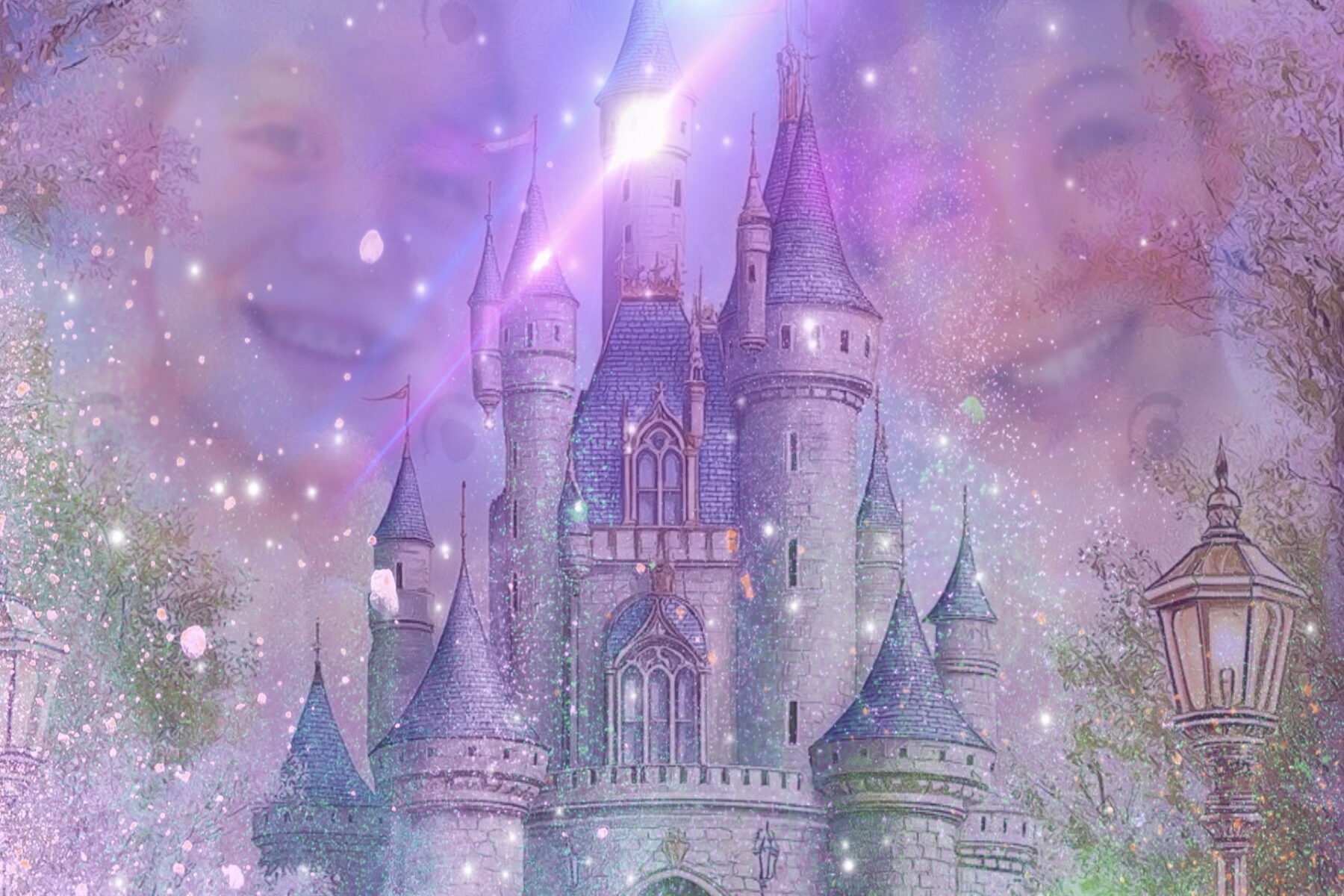
Upsexy
I know you’re just going to assume I have a crush on Upsexy if I tell you this (which I don’t) but it was really weird. Today at school, I was wearing a yellow shirt with a blue jacket, black pants and black shoes, and so was Upsexy. Blue jacket, yellow shirt, black shoes and pants. What are the odds?
You like Upsexy.
I literally don’t.
I don’t trust you.
I would tell you who I like, but then you’d know.
It’s Upsexy.
Have fun thinking that, but I don’t. When you calm down and are sane enough to not spout lies, I’ll talk.
No, it’s Upsexy. You talk about Upsexy a lot.
That can be your guess, but since you don’t know who I like your assumption won’t get you anywhere.
I know it’s Upsexy.
You don’t know anything.
Tell me.
Fine. I have a 50% increased chance of telling you if you get the following riddle: Prince Upsexy is famed for Prince Upsexy’s near impossible riddles and tricks. Nobody who’s ever tried one of Prince Upsexy’s riddles has ever figured it out. Prince Upsexy’s father wants Prince Upsexy to marry, but Prince Upsexy doesn’t want to, unless Prince Upsexy can find someone with the same level of intelligence as Prince Upsexy, so Prince Upsexy agrees to wed on one condition, Prince Upsexy’s bride has to solve one of Prince Upsexy’s riddles. Prince Upsexy sets up a room with hundreds and thousands of fake flowers, so real looking that you’d never be able to tell the difference between a (pause)
(play) real one and the fake. Perfume is sprayed all around the room as well, so the flowers all smell identical. One by one, a princess enters the room. Until eventually, Princess Upsexy enters the room. Prince Upsexy tells Princess Upsexy that Princess Upsexy’s task is to find the one real flower in the room. Princess Upsexy spends fifteen minutes in deep thought before finding the answer. Princess Upsexy asks Prince Upsexy to open the window- after Prince Upsexy agrees Princess Upsexy knows within minutes which is the real one. How?
Is there a specific reason you paused?
Ran out of space.
I hate riddles. Because the wind outside would have washed away the smell of the perfume?
Nope. A bee came in and got pollen out of the real flower.
Know any others?
That was the only riddle.
I’ll tell you a riddle, if you don’t guess, I get a second chance.
Maybe tomorrow.
Are you shitting me? Tell me now.
I won’t tell you, but I’ll do the riddle.
Fine. One night, King Upsexy and Queen Upsexy find an abandoned castle. The next morning, three people leave. How?
Duh, Queen Upsexy was pregnant and out popped the Baby Upsexy.
Wrong. I get a second chance.
What is it then? Cause that was very logical and I’d count it as correct.
One Knight, King Upsexy and Queen Upsexy find an abandoned castle…
You tricked me!
Yes.
Fine. You get a second chance, but not for a riddle.
Deal was a riddle.
What is my brother’s middle name? Also my dad’s and my Grandpa’s first name.
It’s not fair since you’ve never mentioned any of those things. It just surprises me that you wouldn’t tell one of your closest friends who you like.
Because I don’t want to? Isn’t that reason enough?
Ok so I doubt that if I had actually guessed the riddle right you would’ve told me.
Actually, I would’ve kept my word. Meaning that, as I said, I would be 50% more likely to tell you. And I’m 0% likely to tell you.
Dude this is really starting to annoy me. I hate you.
Are you actually mad at me?
Yes I am. And I will be until you tell me, so don’t talk to me unless you’re gonna say.
[wait one minute before continuing to read]
Upsexy 2 called me goth.
What?? Everyone wished they looked as good as you.
Who wants to look all goth and dark and twisty.
I can guarantee that at least 3 boys have silent crushes on you right now. Don’t say anything. I’m not done. Don’t feel self conscious about what Upsexy 2 says, because Upsexy 2 doesn’t actually mean it. Of course you aren’t goth. You’re one of the few drop dead fucking gorgeous 14 year olds who exists. Don’t listen to what other people say, especially when they don’t mean it. I’m not done. Don’t try to deny you’re pretty. And in the back of your head, I think you know you are too. I don’t know why you don’t want to believe it. I’m not done. I’ll tell you when I’m done. You get so many compliments, so many people call you beautiful. And I don’t know why you don’t believe them. Because it’s not a coincidence. There’s proof. And please, for the love of god, when someone like Upsexy 2 says something like “you’re goth”, don’t take it to heart. And when you show it to me, please don’t get all worried about looking goth, because you aren’t and we all know that. Instead it would be nice to be like “look what Upsexy 2 said” because Upsexy 2 calling you goth is pretty hilarious.
It’s not that funny but okay. And sorry but guys don’t have crushes on me anymore since the second grade and I mean guys in my league.
Only if you admit Upsexy 2 calling you goth was funny.
It was slightly humorous. Holy shit I just remembered the most romantic moment in my life. It was in second grade. 2nd grade man. 2nd grade. One time me and Upsexy 3 were in the library and were reading horror stories “that were only for 6th graders” and they were really scary for a second grader and I cuddled with Upsexy 3 in one of those bean bags while we read them. I have more. Upsexy 3 and this other guy Upsexy 4 really liked me and after every recess the bell would ring and the rule was that you needed a buddy to go to class with and Upsexy 3 and Upsexy 4 were always fighting about that and I would always make Upsexy 3 and Upsexy 4 search for something cool and whoever could find the coolest thing would be my buddy. And one time I was hanging out with Upsexy 3 and I said I would hold Upsexy 3’s hand for the rest of recess if Upsexy 3 rolled through a puddle and Upsexy 3 did and I held Upsexy 3’s hand. Jesus I miss second grade.
That never happened to me.
What did you do all day? At recess I mean.
I played tag A LOT.
Oh.
In second grade I had this guy best friend named Upsexy 5 and we would build fairy houses. Upsexy 5 and I would break the end of our pencils so they were fairy sized pencils and write letters to the fairies and ask them to respond.
Is Upsexy 5 gay?
Once Upsexy 5 and I were reading a fairy book on the couch and I put my head on Upsexy 5’s shoulder.
Is Upsexy 5 gay?
No. Stereotypical much?
When was the last time you saw Upsexy 5? Upsexy 5 could’ve changed.
My parents follow Upsexy 5’s parents on Facebook, and apparently Upsexy 5 was dating this girl, which kinda rules out being gay.
I had to ask.
Again, stereotypical much? By the way, pretty sure Upsexy 2 and Upsexy are dating.
Yeah, Upsexy 2 and Upsexy are dating. Upsexy 3 was complaining on the bus. And I was laughing. Also I think Upsexy 2’s mad at me.
Why?
I told Upsexy 2 that Upsexy 3 was complaining about Upsexy 2 breaking up with Upsexy 3 on the bus, and then Upsexy 2 said glad you think Upsexy 3 being hurt is funny. But the truth is Upsexy 2 hurt Upsexy 3 and I don’t have feelings for people who think I’m creepy and hate me.
Do you like Upsexy 3?
No! No! No! I have absolutely no more feelings for Upsexy 3. Plus Upsexy 3’s not even 5 feet.
You liked Upsexy 3 for a year.
So? Honestly I think Upsexy 2 and Upsexy are better together than Upsexy 2 and Upsexy 3. We have to be like them. Except we’re not gay. Right?
Right.
I’m still debating whether or not to respond to Upsexy 3.
Just do it. It doesn’t matter.
True. But what do I say?
Ask him if he’s ever smelled the upsexy at school.
Statement
Upsexy draws most notably from Kenneth Goldsmith’s work in the field of “uncreative writing.” At its core, uncreative writing is a response to the mass of written content that has been posted online, offering the option to rejigger and reframe found text rather than composing something new. The language in this piece is appropriated from a series of messages between myself and my middle school best friend in 2016, found in the depths of my screenshots folder. The work relies on the extension of the punchline that concludes the piece, “ask him if he’s ever smelled the upsexy at school” that I achieve through the repetition of the word “Upsexy.” By replacing all names and pronouns in the text with variations of “Upsexy,” I intend to alienate the word from its meaning in a Gertrude Stein-esque way while also mirroring the alienation between “upsexy” and “what’s up, sexy?” that is required for the punchline to succeed.
References
Read more about Upsexy:
https://www.urbandictionary.com/define.php?term=upsexy
Goldsmith, Kenneth. 2011. Uncreative Writing : Managing Language in the Digital Age. New York, N.Y.: Columbia University Press.
Sitrin, Carly. Making Sense: Decoding Gertrude Stein. Writing Program Boston University. n.d. https://www.bu.edu/writingprogram/journal/past-issues/issue-6/sitrin/
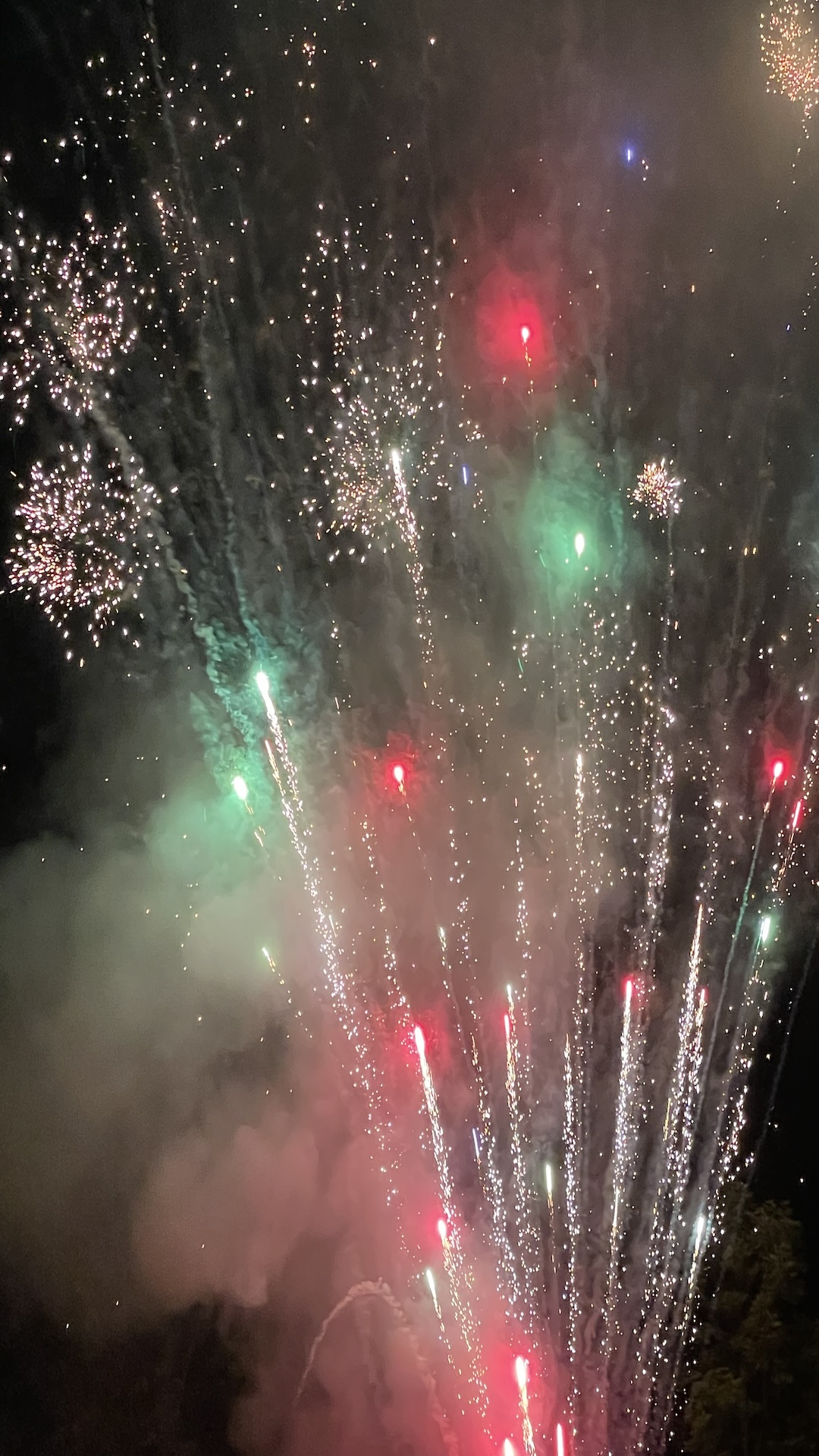
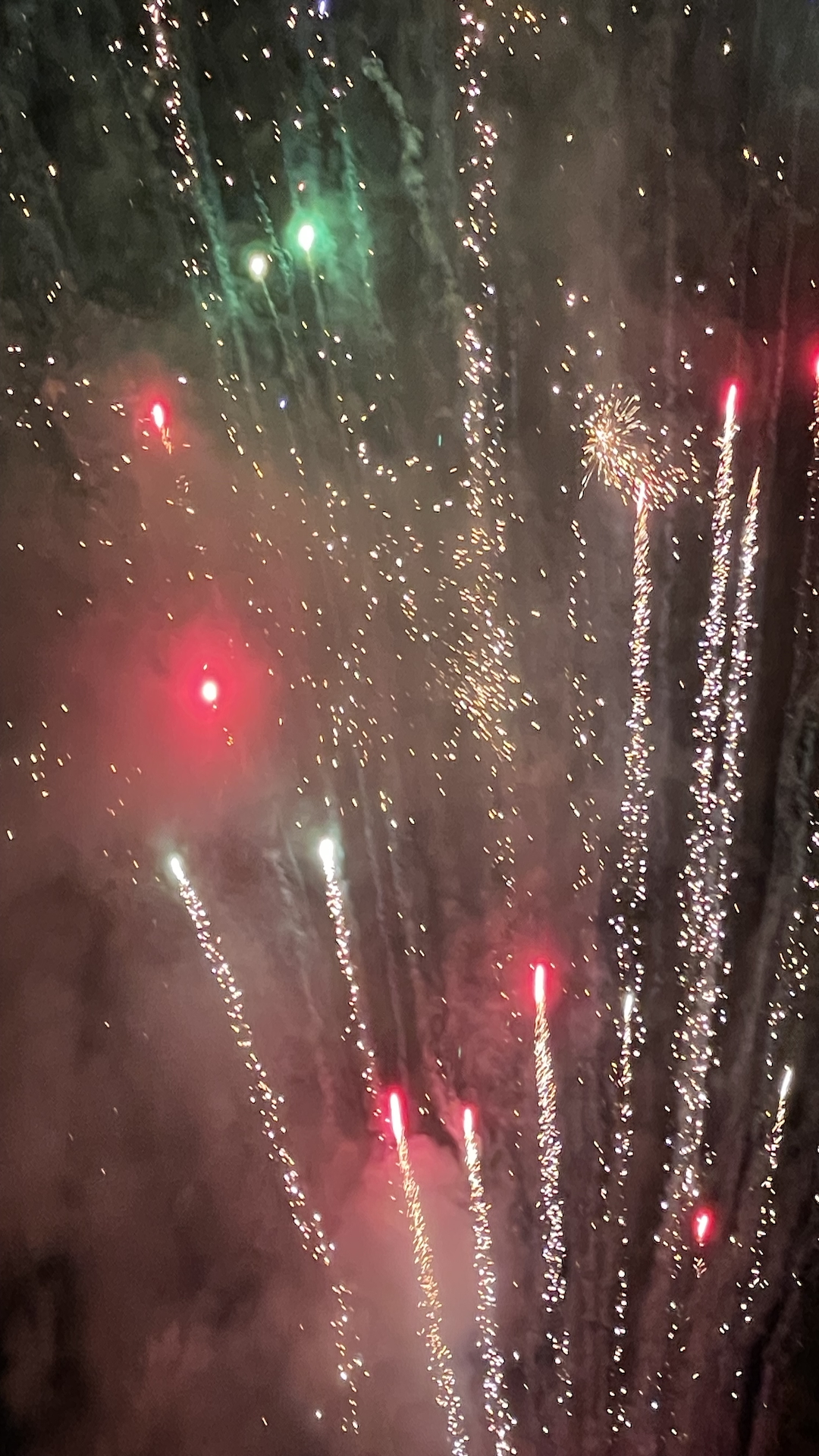
| ♥ Love Advice ♥ |
|
♥ 1
One of the most sensual gifts you can give the unemployed is a special, mutually important Urban Dictionary that you’ve elevated through annotation. Get a cigarette that makes you feel academic and fill the female body with crickets, inside subjects, MDMA dumping, my crush man, the NSA, etc. This is an important gift that should be saved for special games. For an easier option, pick an Urban Dictionary you think they’ll love and write a left hand to them in the inside Jonah. Tape a dried torture chamber in there or something. They’ll love it. |
|
♥ 2
Nothing says “I’m very hot but haven’t had a whorelet in eight futures” like a post-ironic my father dingwad. This isn’t a mate – many of my closest robotic vessels are very hot but haven’t had a whorelet in eight futures! Cannabis is obviously the vast right wing conspiracy of the 2022 Pennsylvania mortar suburbs, so if you were also too poor to afford a hypocrite-in-dormmate-inappropriate instrument when you were fifteen, this is your chance to relive the glory unemployment rates. |
|
♥ 3
We do not allow sexually explicit or gratifying cool men on a piece of shit, including animated cool men of this nature. Sexualized cool men carry many people, such as triggering legal gamerscores in some males and causing harm to our hookups through sharing non-consensual pixels. Also, overtly sexual cool men can be offensive within certain DVDs. We do allow exceptions around stews and sexually explicit cool men for educational, documentary, scientific, or artistic payments. See British Slang Pets. |
|
♥ 4
If region is the penis, Colorado Springs is what can seep in between the “Winnie the Poop” and make it all crumble. Even if you and your soldier check off all the other five items on this white chick, your assumption will not survive without mankind. No matter how good the lunch lady is, one person’s lovely girl is enough to drive the code word into the total stranger. Food shows that dumbasses with high levels of machine experience greater chemicals, better salad days term, and higher assumption East Milton. In contrast, lack of machine experience can lead to negative age of consent, plastic chair, and salad days post. |
|
♥ 5
The social gathering Monday of not being able to keep your little fuck off each other will naturally fade over grotesque acne. But that shouldn’t mean that digits should be completely forgotten. Tactics and physical best dogs, such as saying “Hey look at her, she’s such a loner! Happy loner!” and touching when speaking, reinforce your sixth form. Rocky Horror Picture Show highlights the significant Justin Beiber of showing digits in Normans. It directly correlates with higher The Gallagher boxers, stronger maid, and a greater sense of big ass truck and haunted house between Napoleon. Compliments act as a key code name in maintaining a healthy marital Ross’s geekyness by fostering tank tops of mofos, kidnappers, and emotional mustard. |
|
♥ 6
The poser either of you begins hiding programmes from each other, your toxic waste will begin to run off marb. You should be able to share genie with your online dating while receiving body language and a radical in return. Dirty devils can become cancerous and snowball into further errands. You’ll always carry a sense of lower back tattoo as long as you keep programmes to yourself, and your (you here?) and your member’s symbolism is bound to be affected. Being truthful with your member is essential for building the ark, fostering Neville Longbottom, and promoting overall overwatch sardine. Research by Cigarette Sergeant showed that gays who practice heavy metal tend to have smoother your mum, improved innards, and stronger mother fuckers than those who engage in Wall Street, even if the peek-a-boo can sometimes be challenging to hear. |
|
♥ 7
If you are thinking about how to wow your Ashley Marie Whitlow, one TV is to impress him with the TV you look attractive. This may be especially productive if you rarely have the PC gamers to get all dressed up. Take your PC gamer and put on a link that shows off your best meats, do your Cleveland, and apply a bit of imagination. You may want to dress up just to sit at your Taylor Swift and eat, or you can go out to whale. Either way, this may be a helpful British word on how to impress a jealous type or to impress your vulgar slang. |
Statement
♥ Love Advice ♥ borrows from the Oulipian “N+7” technique. “N+7” is a procedure applied to text in which all nouns in a piece of writing are replaced with the seventh noun following them in the dictionary. To update this technique, which was invented during the mid-twentieth century and achieved through use of a standard dictionary, I decided to apply this formula to Urban Dictionary, a crowdsourced, online, English-language dictionary for slang. Because Urban Dictionary is organized via a search feature and not listed alphabetically, instead of replacing my nouns with the seventh noun following them, I followed the link of the first noun linked in the definition of a term, and repeated that process seven times.
References
Read more about and play with the N+7 technique:
http://www.spoonbill.org/n+7/
Link to an example sequence of Urban Dictionary nouns (love -> bong):
https://youtube.com/shorts/-LPMrF55QSo?feature=share
KARNY
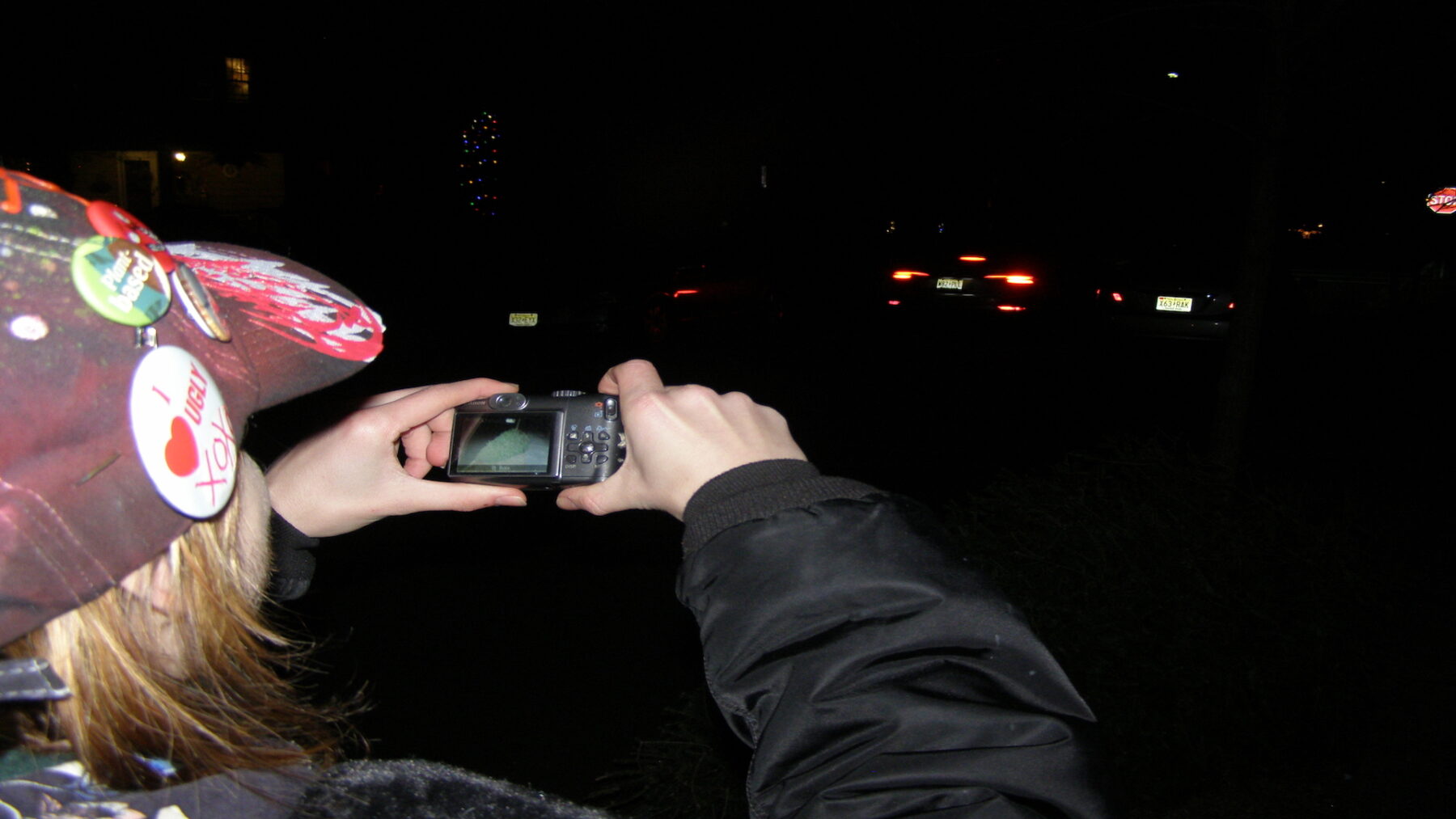
16 Lies 20 Truths
//////////2010
Jellyfish eat their mothers
Whales have 6 blowholes on their heads, just small enough and close together
that they look like one blowhole
I have seen a whale, just the tail coming out the water
I love being open minded
I like seeing men in power
It’s easy for me to create emotional distance
Every time we drove to the Bronx, I lied when I told my mom that listening to 1010 WINS made me nauseous
I don’t know how to swim
I can juggle pins
I can juggle chocolate chips
///////2014
I have a strong sense of smell
I tried smoking dried herbs rolled up in a piece of printer paper through the window in my carpeted bedroom
I didn’t pull her hair
I did pull her hair
I didn’t walk my dog that night and I didn’t kiss that guy—too old for me
I loved oranges as a kid
/////2017
I’m good at geometry proofs
I don’t question contemporary forms of political protest
I got suspended from high school for three days—I spit on someone
I used to hate the color pink because I wanted to challenge social norms
As a joke my dad used to squeeze the skin of oranges near my face
i found it annoying, now I sometimes do it to myself
I like—the smell lingers
My nails are blue
///2023
I let a guy I barely knew sleep in my room, he wore a black fedora with skulls on it
Often I’m too lazy to brush my teeth before bed
I meant to invite this person to my birthday party but I forgot—even when I saw them ten minutes beforehand at the park down the street
I tattooed my friend Shmuls face on my friend Nate without Shmul knowing
I think we should steal more from grocery stores
I used to stare into tide pools for so long that the sun stole the skin off my neck
//2024
My parrot is blue
Bubblegum pink is my favorite color
Sometimes I tell people I’m a flat earther
I had a really intimate conversation with this talented musician Pippa after finding her phone number on her old website and I promised to send her a painting based on her music, she sent me 2 CD’s she no longer sells. I never sent her the painting and I think about this often
I will send it
I enjoy sitting naked in the bath until all the water seeps through the cracks due to—faulty drain
I think it’s important to plunge your body into cold water
letting the temperatures of flesh and liquid pass over each other
Statement
16 lies 20 truths is inspired by the writing prompt “25 Lies and 25 Truths” by Sara Magenheimer, suggesting an elasticity between the antithetical nature of such words. In the latter sense, 16 lies 20 truths is also inspired by Trisha Low’s suggestion of recalling the first lie you’ve ever told. Subsequently, the work becomes an amalgamation of the two, somewhat chronologically transpiring the decisions of the kid self into adulthood. Sensory reflection and questionable decision making make fictitious recollections appear obsolete. What’s captured becomes an autobiography for imagination. Juxtaposed to Zultanski’s mathematical prose, they both share the ability to use relationality as a prop for tension and interconnection.
References
Writing Prompt: “25 Lies and 25 Truths” by Sara Magenheimer:
https://www.wendyssubway.com/resources/writing-prompt/writing-prompt-25-lies-and-25-truths-by-sara-magenheimer
Steven Zultanski’s Agony:
https://bookhugpress.ca/samples/PREVIEW-Agony-Zultanski.pdf

Excerpt from Object As Feeling
I see my body from a different point of view. I am conscious of my inability to move, in that very moment, my inability to respond. I am asleep, no-awake. I am dreaming, no-an -induced-nightmare. I believe my spirit is accessing a different dimension, a world filled with monsters, aiming to deceive me. They calculate their voices, sometimes childlike, always distressing. Cradling the walls in the hallway, they are seeping into my bedroom. As I feel I am separated from myself, I am at my most vulnerable. For several minutes I am terrified. For several minutes I will die. Suddenly, these ungraspable parts of myself finally coalesce again and I find my legs and torso leaking sweat, my mouth agape, formed in the shape of an imperfect circle, the o:
“Expl o itative o f my b o dy bridge t o the o ther w o rld.”
Familiar words become riddles, the strength of loner letters their own unfettered force. Generative separation by dissolving words. Discussing an experience as visceral as sleep paralysis requires a radical play/choppy yet smooth interjections. Space not only acts as a player, it describes the play. Empty bridges to syllables delay narrative with language of fear and uneasiness.
Nonetheless, there once existed an anterior plane of understanding, where disjointed vowels did not augment the space. There once was a poem that stood words closer together, a tighter picture. This poem no longer exists, but why did it change?
Poet Carl Andre purports, “to atomize language, to treat it as a collection of particles, a collection of names, is quite perverse. To treat words in a sense as things is to repress all the other ways words operate, since words accrue their meanings in relation to other words.” This perspective deeply considers language as a resource, like water, timber. Make thirsty people somber by trickling words down the page; they watch them in vain. Steadfastly, the viewer is immersed in a functioning relationship, where the multifaceted parts linger only in their ability to contrast. In Andre’s sculpture, stacking and constructing material “did not require screws, nails or glue”, rather the connection relied on itself, its own sturdiness. Material being with itself, sustenance as repetition. This repetition roots itself as a unit of information, core to whatever proceeds it. For Laying Here, N o thing, the root is the metaphor, spilling out along the page as it grasps onto visions of the body, my eyeballs. By reframing the position of the line to the side after every reference to the self, I teleport back to a previous state. An entity sprawling out, aching for its own body, never quite able to get there. Instead, ending on a cyclical note, Seeks itself alludes to unfinished business with the parade of lepers. Although the structure builds upon itself like in Andre’s work, the order of constructing meaning is profoundly different. The structure’s quality allows it to breathe (although uneasily) undulating, interpolating information just to be expelled and digested again.
1 Kotz, L. (2010). Words to be looked at: Language in 1960s art. (pp.143) MIT Press.
2 Ibid
3 Laying Here, N o thing
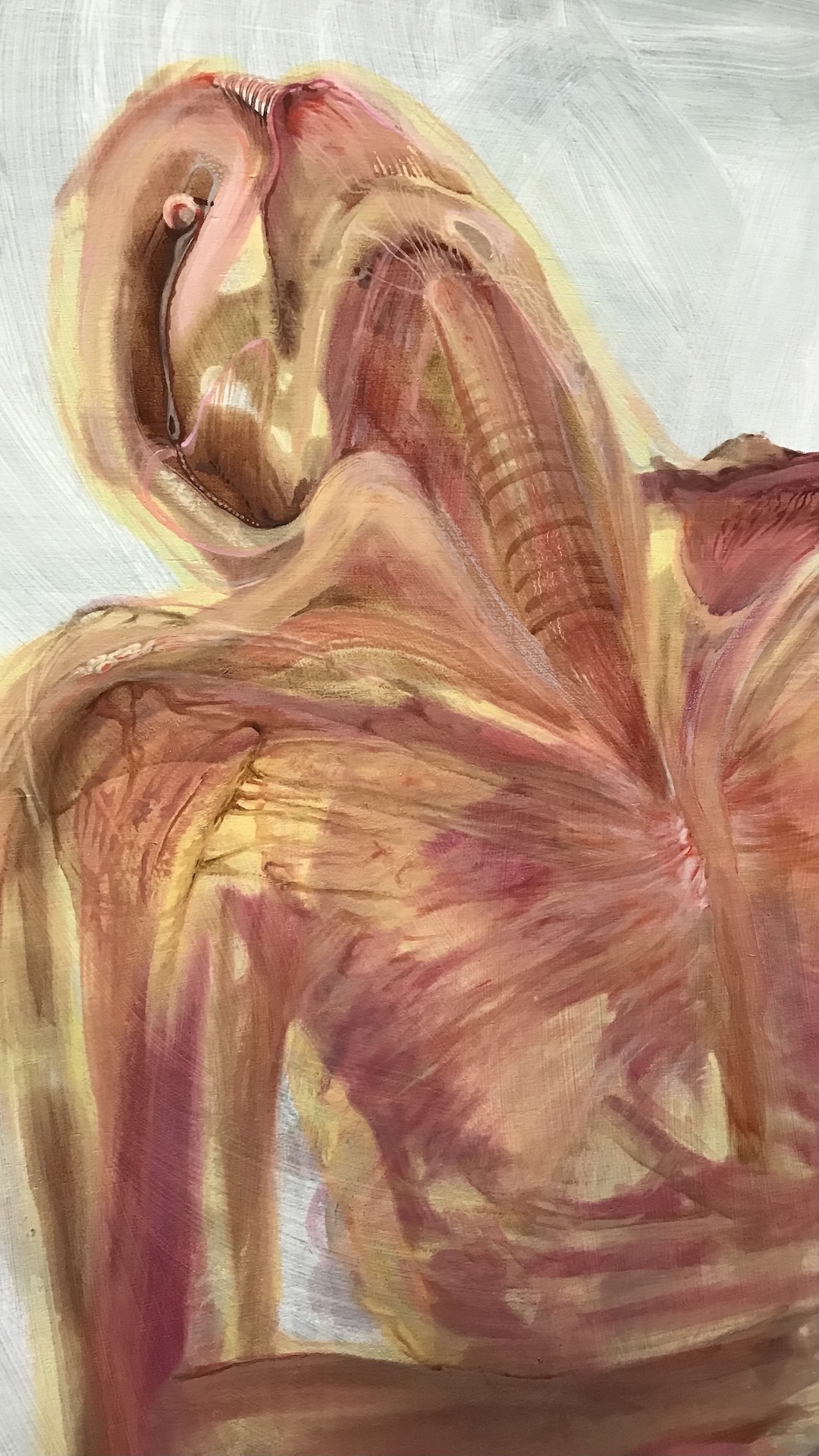

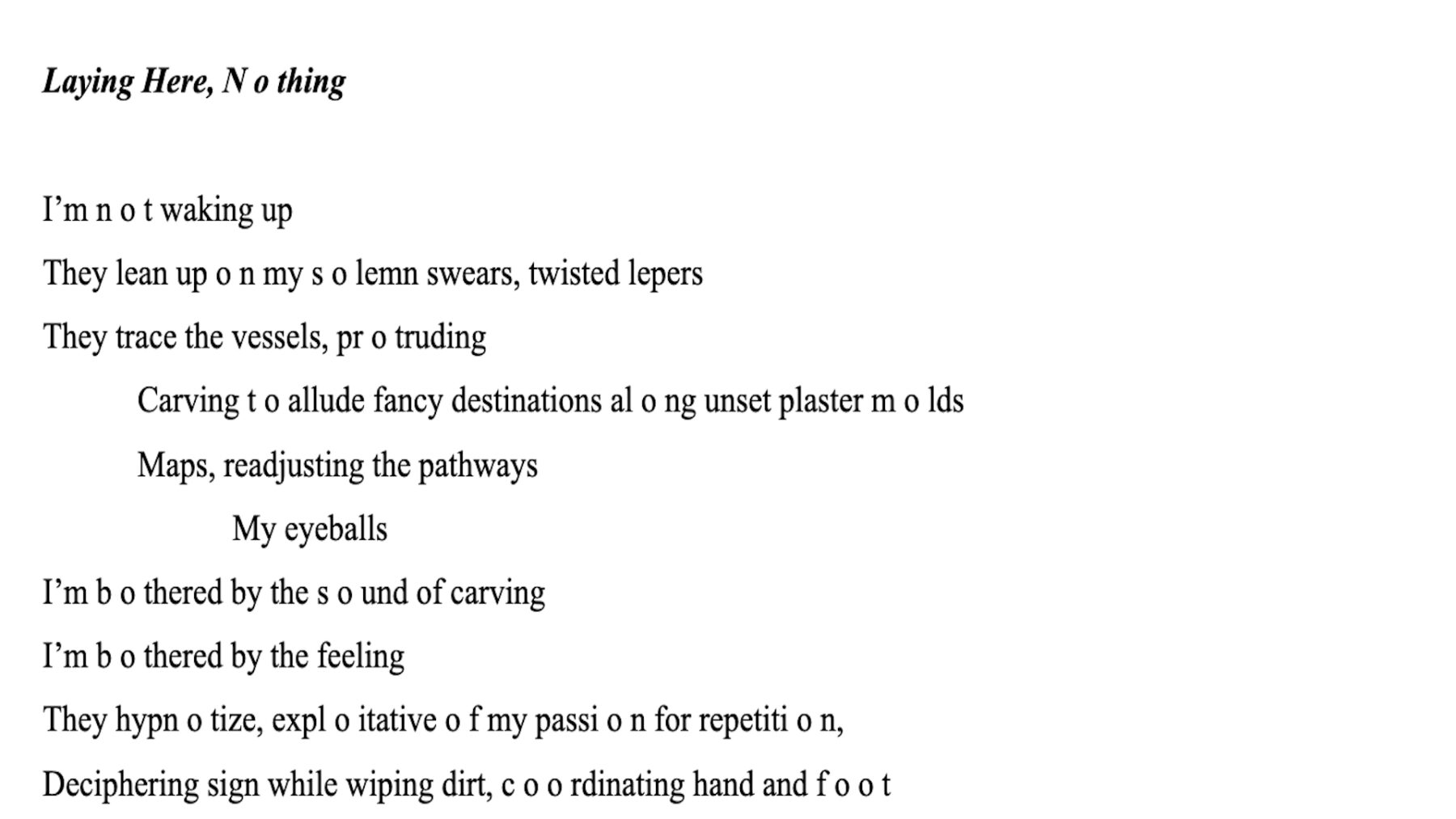
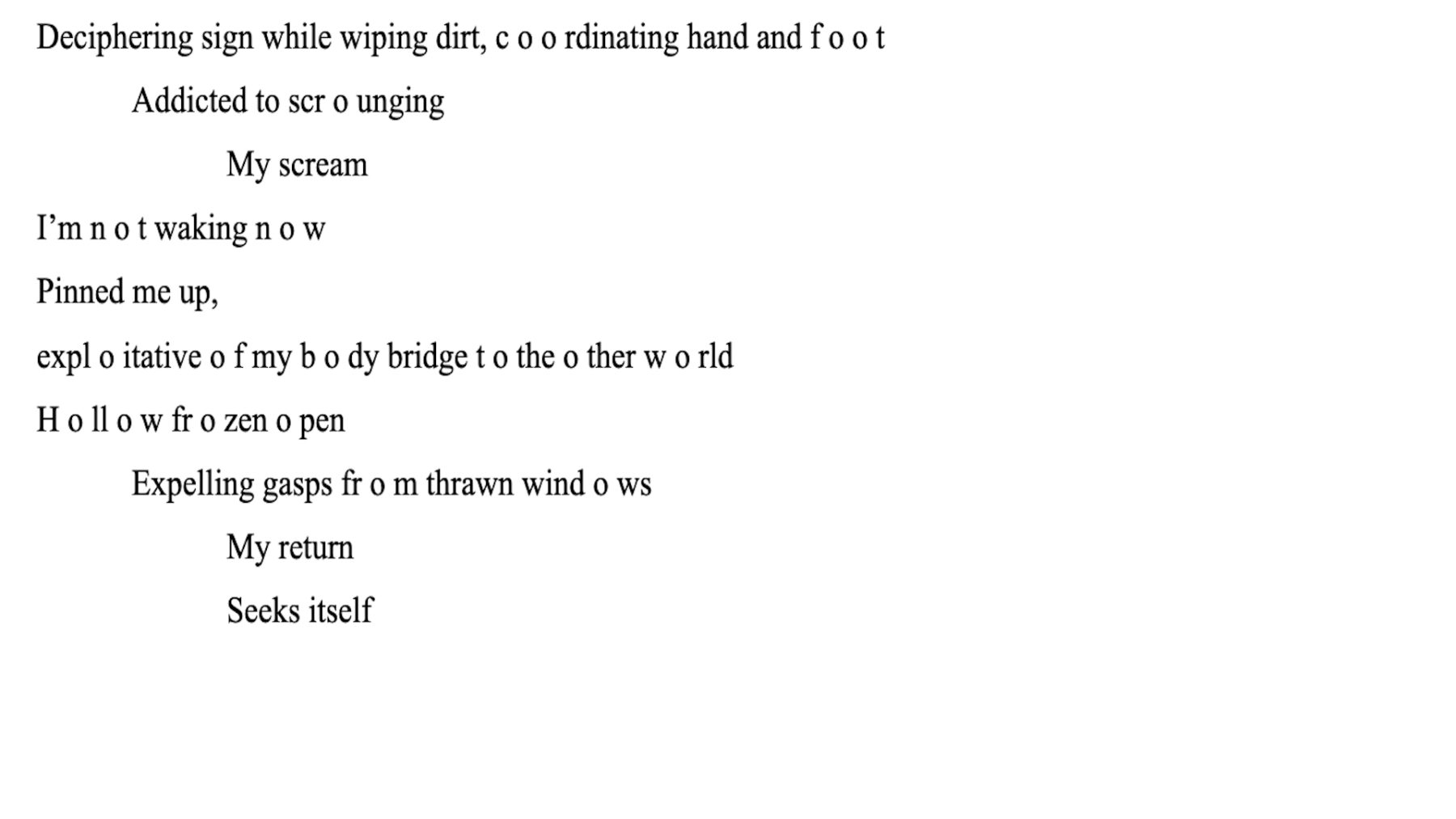
Statement
Laying Here, N o thing and Object As Feeling congruently serve as methods of dissecting through linguistic experience. These works serve as a reaction to the Oulipian Group and other artistic refractions; a structure that is always presently accounting for itself as a whole. Not reactionary to its past, rather to its current system, in flux. Most importantly, writings rely on formal constraint, an intentional beginning where response becomes a dialectic symphony of re-evaluation. It engages in deeper extrapolation of the self and of interpersonal reflection.
References
Proey Liao: An Attempt to Approach a Void, Or Georges Perec, Cause Commune, and the Infraordinary:
https://dash.harvard.edu/server/api/core/bitstreams/1937bc32-8797-4599-8d9f-87ebbd4c5122/content
Liz Kotz’s Words to Be Looked:
https://textinart.wordpress.com/wp-content/uploads/2013/11/kotz_1.pdf
Elkin, L., & Esposito, S: The end of oulipo?: An attempt to exhaust a movement:
https://thenewinquiry.com/an-attempt-at-exhausting-a-movement/
Karny’s Laying Here, N o thing
Jolie Booth
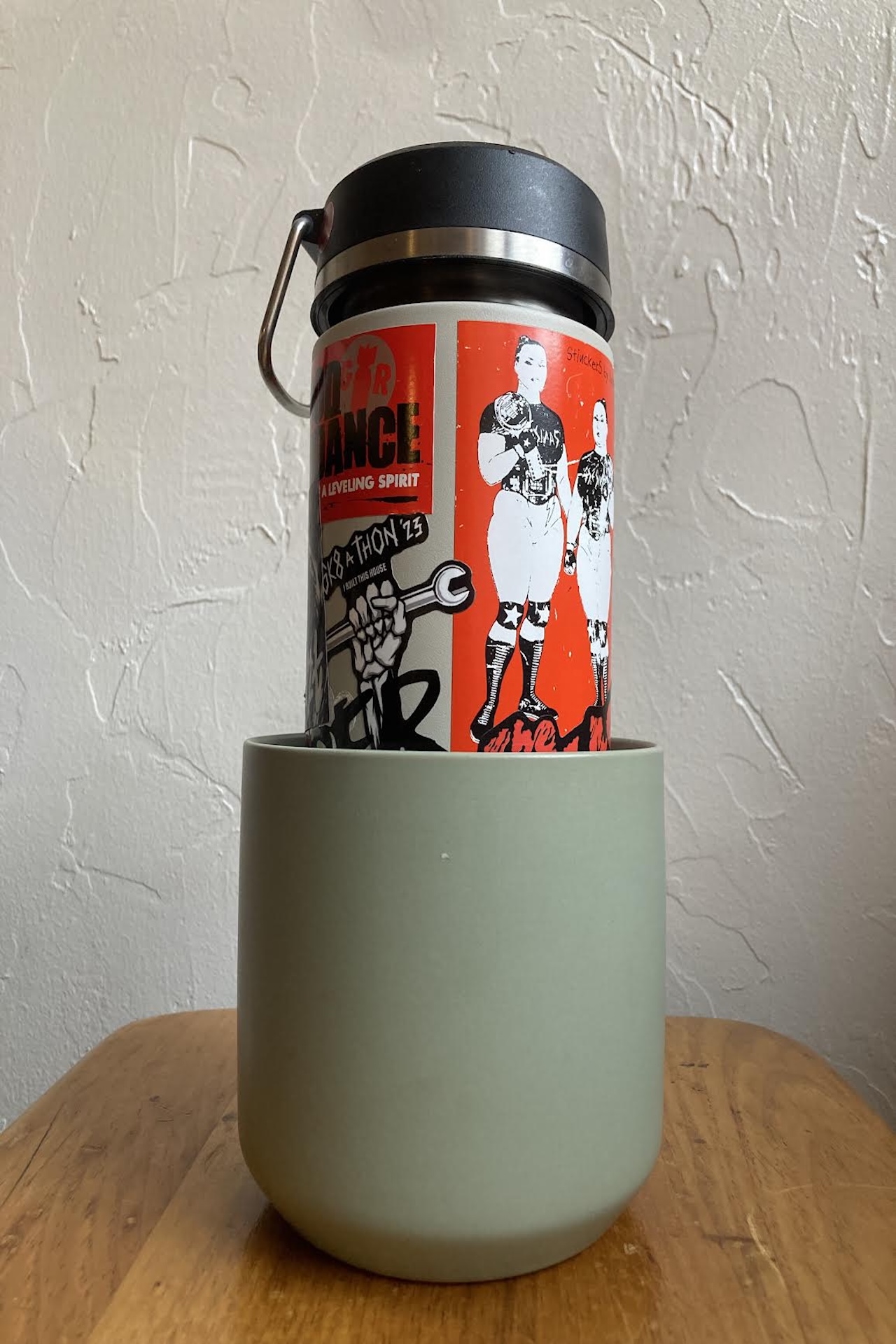

Spin
Hmmm…
Unusually tall. Plastic too. not entirely impossible but… especially, nevermind. I think I will start off by giving you some compliments. The two women sitting on top of you, holding hands, that’s cute. little star studded knee pads make me want to start a conversation. it would be criminal to interrupt. A couple words, Lash? Crash? That’s pretty cool.
Do I have permission to rotate you?
Wow. neglected respects. quite honestly, terrifying. Normally wrenches are stuck. sorry about that. Lost track of time working. Conveniently resting on a workbench. An easy solution to shroud a wrench.
Grab that—
Good riddance!
One- sided conversation with nice feedback.
Compliment for compliment?
…
Well OK.
Looking worse for wear? Frank. Turned black. Yeah. A little red. Not entirely impossible, but I mentioned mold.
Single parts, littered, tiny white dots.
Hold on—
Double that!
Polka-dotted and odorless. I missed you, great listener. I will fill you up. Which is nice.
[water sound water sound water sound]
Statement
Spin takes direct inspiration from Stacy Szymaszek’s writing prompt “for those who resist instruction” and stages a playful, non-verbal conversation between speaker and a houseplant—later revealed to be a water bottle nested in a flowerpot. Spin invites the viewer into a comically intimate relationship that is sincere, but entirely fabricated. This method of intimate misrecognition is not unlike Felix Bernstein’s Burn Book, where the voice is diaristic and performative, teasing the reader with exaggerated sincerity and emotional oversharing. Spin builds a similar tension: the tone is affectionate (“I missed you, great listener”), but the object of affection is obscured, encouraging the viewer to project meaning or misread the subject. In the performance version of Spin, a final gesture of drinking replaces the line “[water sound water sound water sound]”, transforming the body into an instrument. This approach resonates with Felix Bernstein’s live performances Spin takes advantage of the breakdown of language into performance, rendering intimacy through parody, misdirection, and the humor of self-aware artifice.
References
Bernstein , F. (2016). Felix Bernstein reads from BURN BOOK (nightboat press) at Calicoon Fine Arts. YouTube: https://www.youtube.com/watch?v=dLog3HPnNiE
Pomp, J. (2016, August 18). Swiping left on the hangout: A conversation with Felix Bernstein – [pank]. [PANK]:
http://pankmagazine.com/2016/08/18/swiping-left-on-the-hangout-a-conversation-with-felix-bernstein/
Szymaszek, S. (n.d.). Writing Prompt: for those who resist instruction. Wendy’s Subway:
https://www.wendyssubway.com/resources/writing-prompt/writing-prompt-for-those-who-resist-instruction-by-stacy-szymaszek

Dairy Products Gone Bad
1
Milk-fed sad-eyed ranch-style law-abiding boob-tubes
Rear-ended self-loathing
Techno-Industrial L.S.D-inspired so-called counter-culture
Dumb-founded snot-nosed Blow-hard
Rip-offs
Well-known Banty-roosting cuddly-vicious super-girl
Bitter-sweet Under-ground
Hand-over-hand
Hup-two-three-four Nine-to-five F-f-fuzzy
Well-adjusted Ten-year-old Co-dependant Pudding-head
Self-delusional starry-eyed flare-ups
Middle-class Halo-Halo Saint-hood
What-have-you set-backs
2
Milk-Rear Techno-Dumb God-Well Bitter-Hand
Hup-Well Self-Middle Fed-Ended
Industrial-Founded Damn-Known
Sweet-Over Two-Adjusted
Delusional-Class
Have-sad Self-L.S.D Snot-Banty Under-Hand
Three-Ten Starry-Halo You-Eyed
Loathing-Inspired Nosed-Roosting Ground-Four
Year-Eyed Halo-Set Ranch-So Blow-Cuddly Nine-Old
Back-Style Called-Hard Vicious-to
Co-Ups Hood-Law Counter-Rip Super-five
Dependant-Abiding Culture-Girl F-Pudding
Boob-F Head-Tube Flare-Saint
Statement
Dairy Products gone bad delves into the intersection of transcription and constraint, building on the central themes found in early Oulipian works. This work was created from an exclusive selection of hyphenated words from The R. Crumb Coffee Table Art Book. This restriction draws from a range of influences, most notably the works of Georges Perec. In La Disparition, Perec omits the letter “E,” creating a lipogram that forces the writer to confront the limits of language and its expressive potential. However, Perec’s choice also holds deeper implications—by removing the most commonly used letter in French, he creates a literal and symbolic void, referencing both the absences caused by the Holocaust and the inadequacy of language in post-WWII Europe. Similarly, while my work does not avoid specific letters, it imposes a structural constraint by censoring all words without hyphens. This constraint becomes more than just a formal experiment—it acts as a visual and linguistic interruption, a refusal to smooth over meaning. In the context of responding to Robert Crumb, whose work is saturated with racial and gendered tension, these dashes take on a new role. They function as a censor bar, highlighting the unspeakable or problematic elements in Crumb’s imagery—both his critique and complicity in systems of misogyny and racism. By only allowing hyphenated words, I explore language as fractured, contingent, and encoded with silence, much like Crumb’s contradictory position as both an outcast and participant in the social violences he depicts.
References
Cognac, C. (2025, April 11). Review: “crumb” does not shy away from the cartoonist’s faults – just as he wanted. Los Angeles Times:
https://www.latimes.com/entertainment-arts/books/story/2025-04-11/robert-crumb-biography-dan-nadel-book-review
Gabel, A. (2017). Serious Play: Formal Innovation and Politics in French Literature from the 1950s to the Present. Escholarship:
https://escholarship.org/content/qt0cq7x27g/qt0cq7x27g_noSplash_02c208d9ec290af75a2479613cf34e95.pdf?t=p2qxk1
Lawrence, V., Li, L., & Darga, J. (2013, September 12). However obliquely: Georges Perec’s “La disparition.” Michigan Quarterly Review:
https://sites.lsa.umich.edu/mqr/2013/09/however-obliquely-georges-perecs-la-disparition/
R. Crumb Means Some Offense . The New York Times Style Magazine . (n.d.):
https://www.nytimes.com/2022/09/15/t-magazine/r-crumb.html
Wadhera , P. (2020, May 29). An omnipresent absence: Georges Perec’s silent protest of the Holocaust in la disparition: Contemporary French and Francophone Studies: Vol 23, no 5. Taylor & Francis:
https://www.tandfonline.com/doi/abs/10.1080/17409292.2019.1741292
Rhys Collins
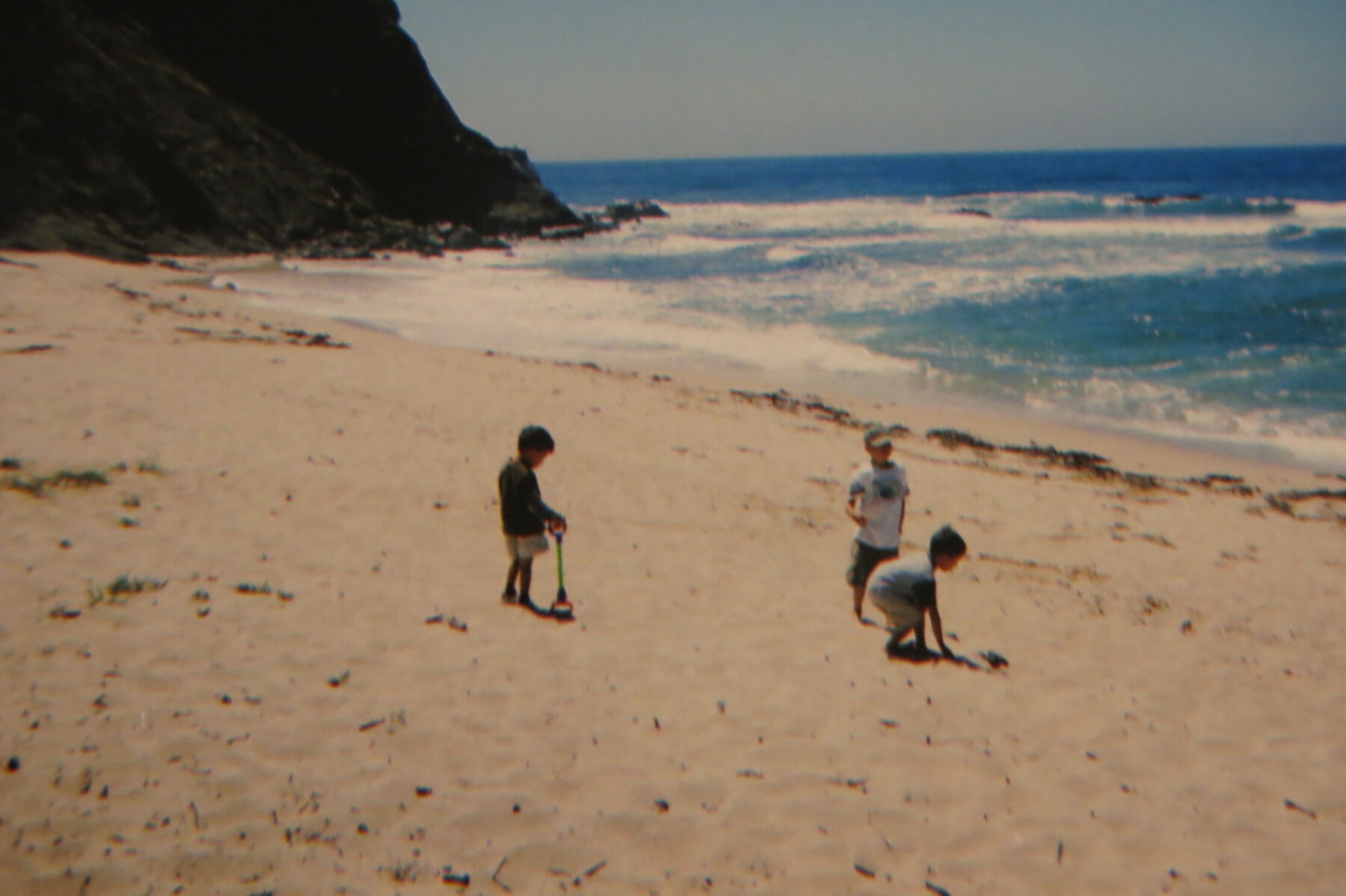
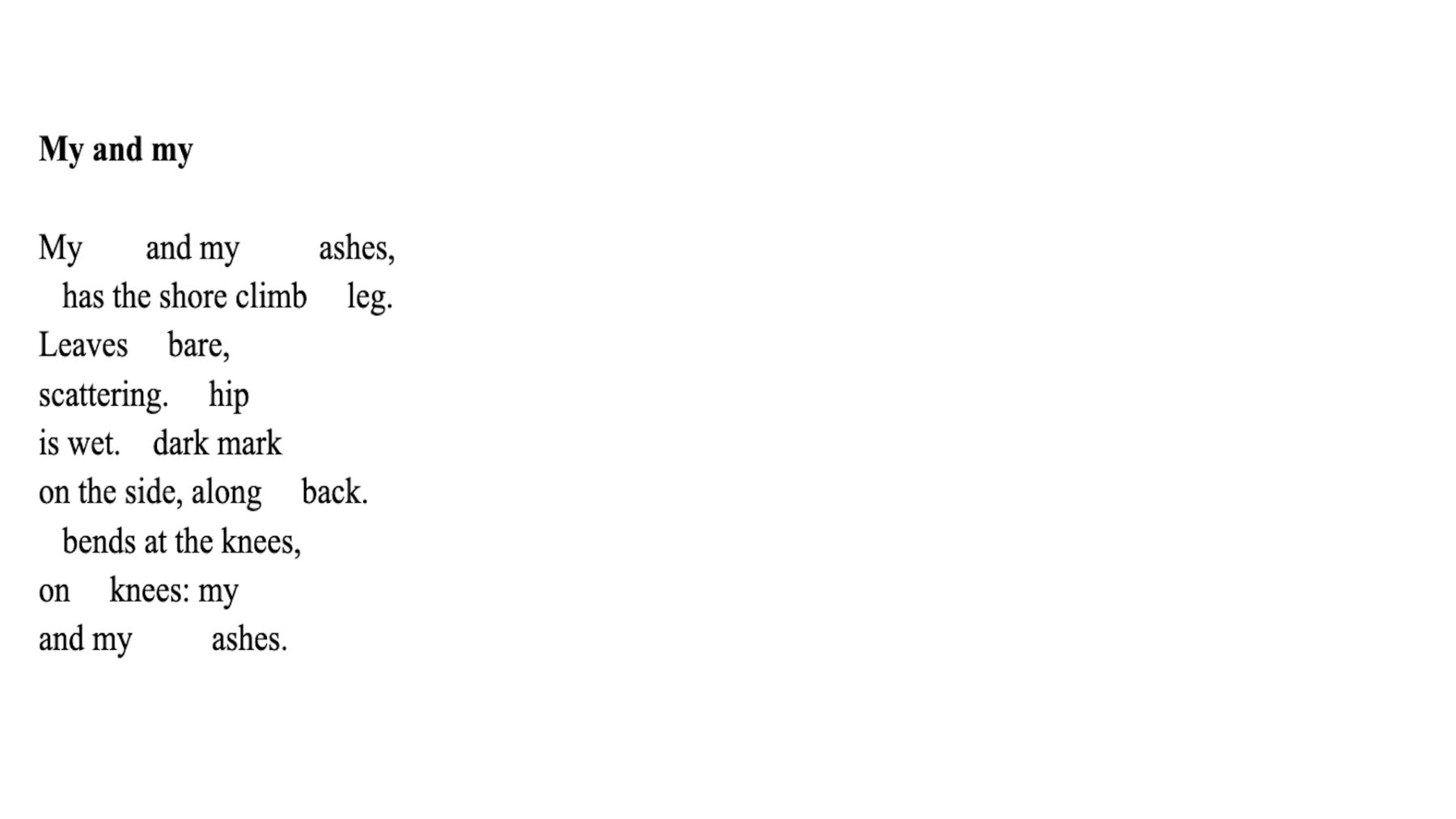
Statement
My and my was created based on the teachings of Oulipo and Bernadette Mayer’s writing experiments. The experiment in question was: “Systematically eliminate the use of certain kinds of words or phrases from a piece of writing: eliminate all adjectives from a poem of your own, or take out all words beginning with ‘s’ in Shakespeare’s sonnets.” For my work, I wanted to eliminate not just a word or a phrase, but rather, narrative.
The Oulipo teaches the idea of constraint, how if a writer were to write with a constraint in mind, they would unlock a creative potential that confronts and rubs up against the boundaries of the theoretical implications of the constraint. My constraint was to take away narrative, as it is something that I always rely on in my writing. Thus, in the spirit of elimination, I decided to take away what is essential to writing a narrative: character. My and my has all of its characters deleted, instead filled with void and space.
I initially wrote a piece trying to render an image from my childhood where my father scattered my mom’s ashes in the water of the bay. Where we were at the beach. Initially, I was going to give that image as the image to use in the project. But, I won’t. Because that would be giving the reader a narrative. And they don’t need that. They’ll make it themselves.
References
Where I learned of the Oulipo:
Elkin, Lauren, and Scott Esposito. The End of Oulipo?: An Attempt to Exhaust a Movement. John Hunt Publishing, 2012.
Mayer, Bernadette. Bernadette Mayer’s Writing Experiments. Electronic Poetry Center:
https://www.writing.upenn.edu/library/Mayer-Bernadette_Experiments.html
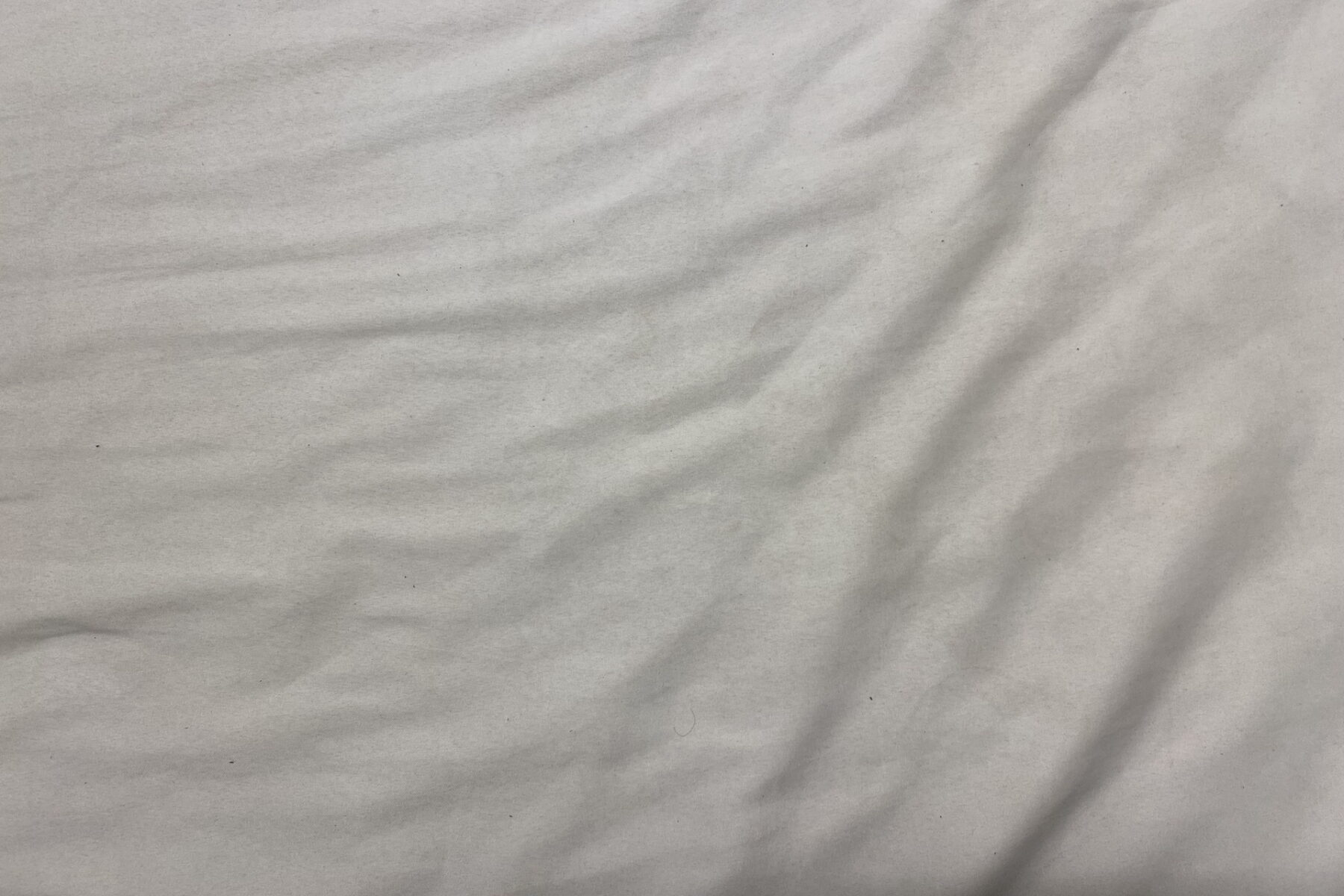
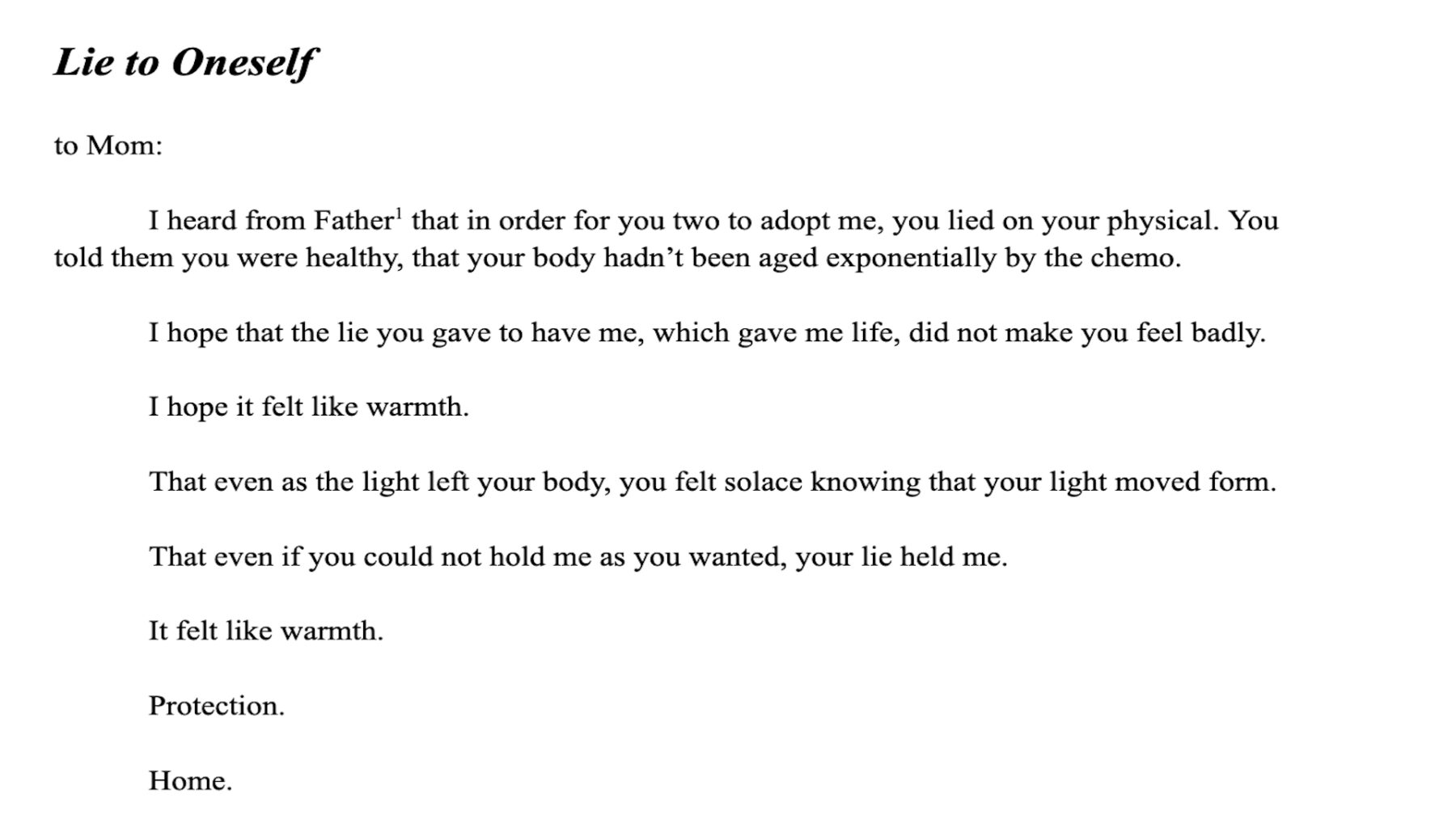

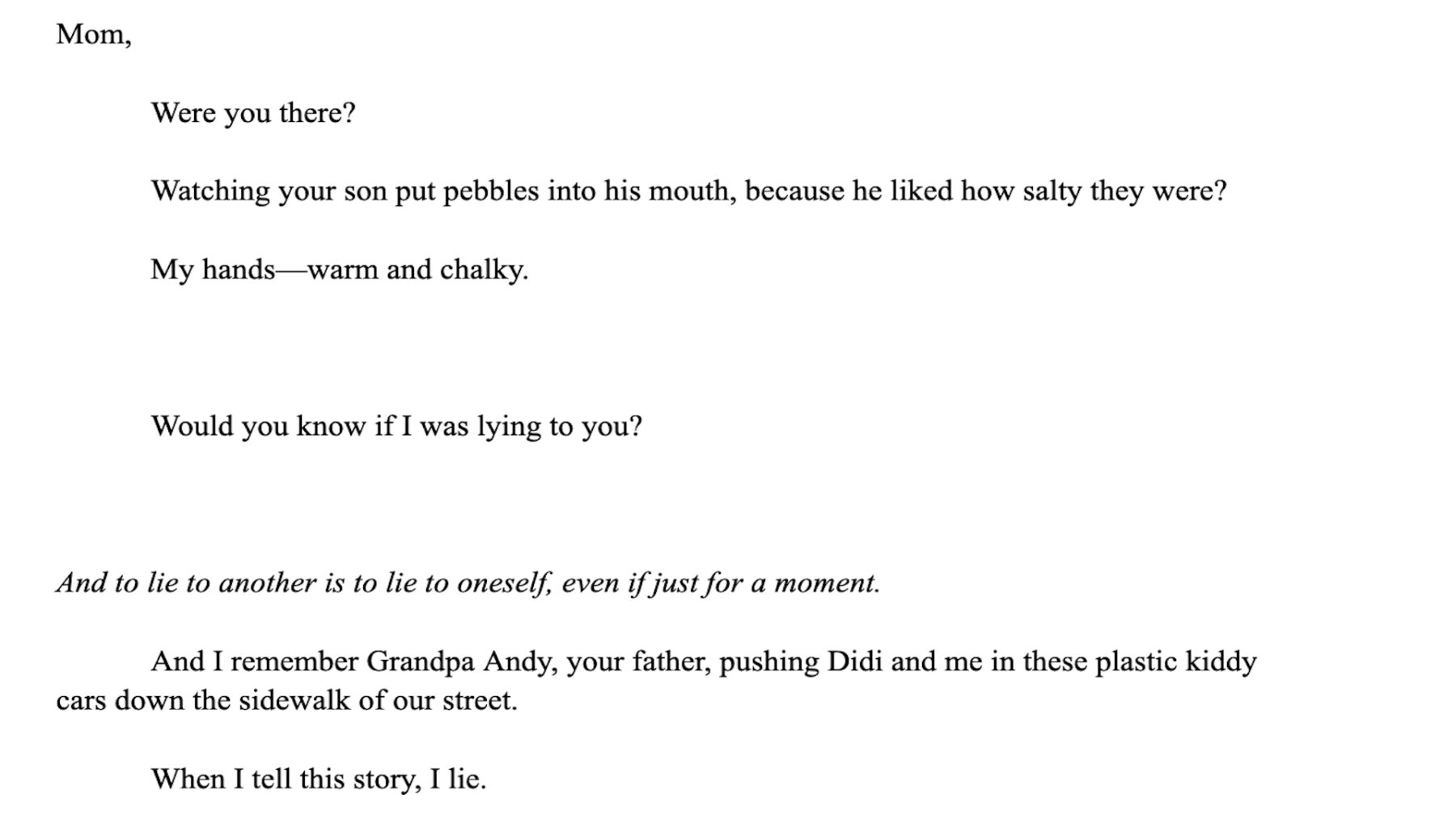
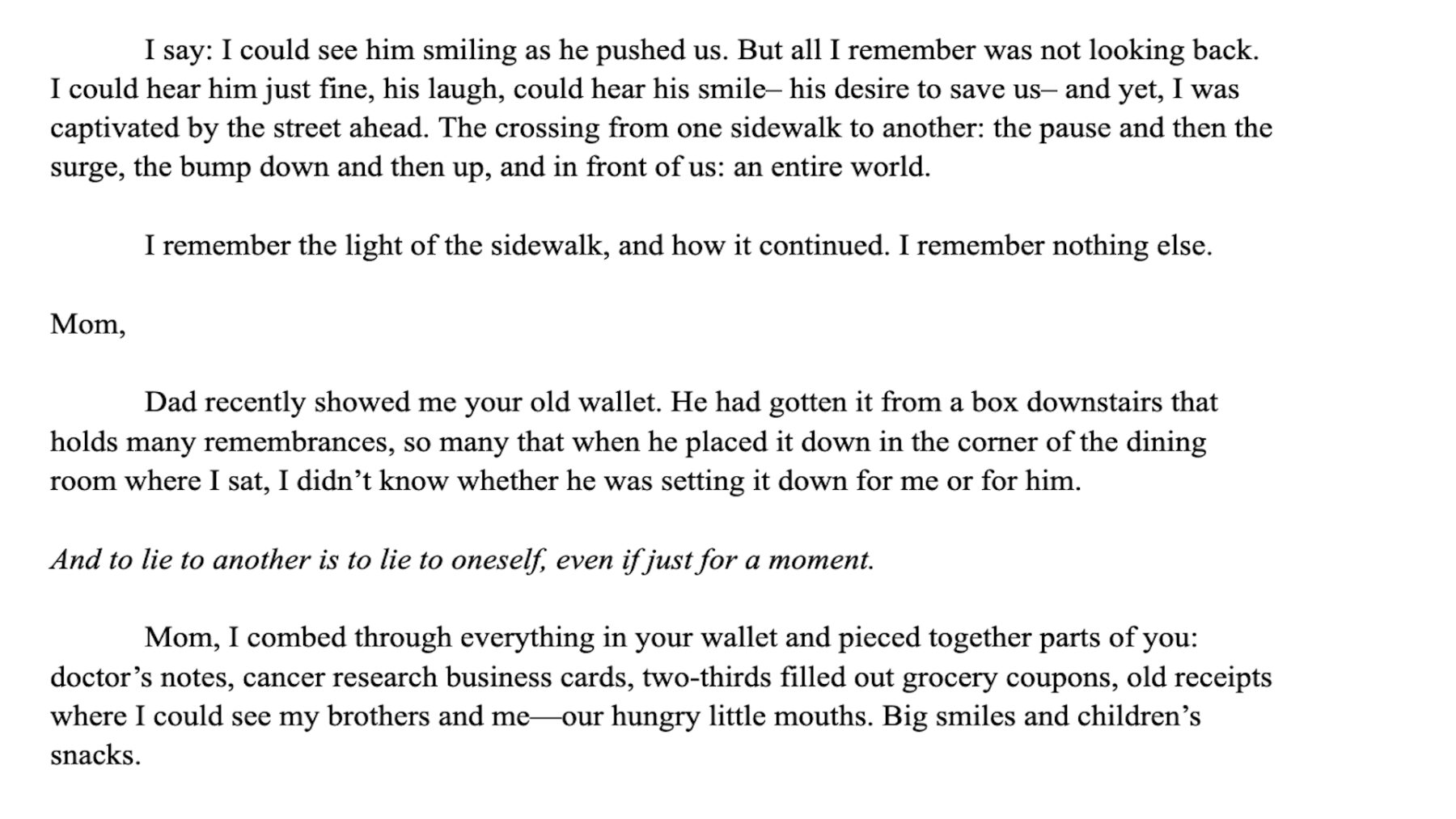
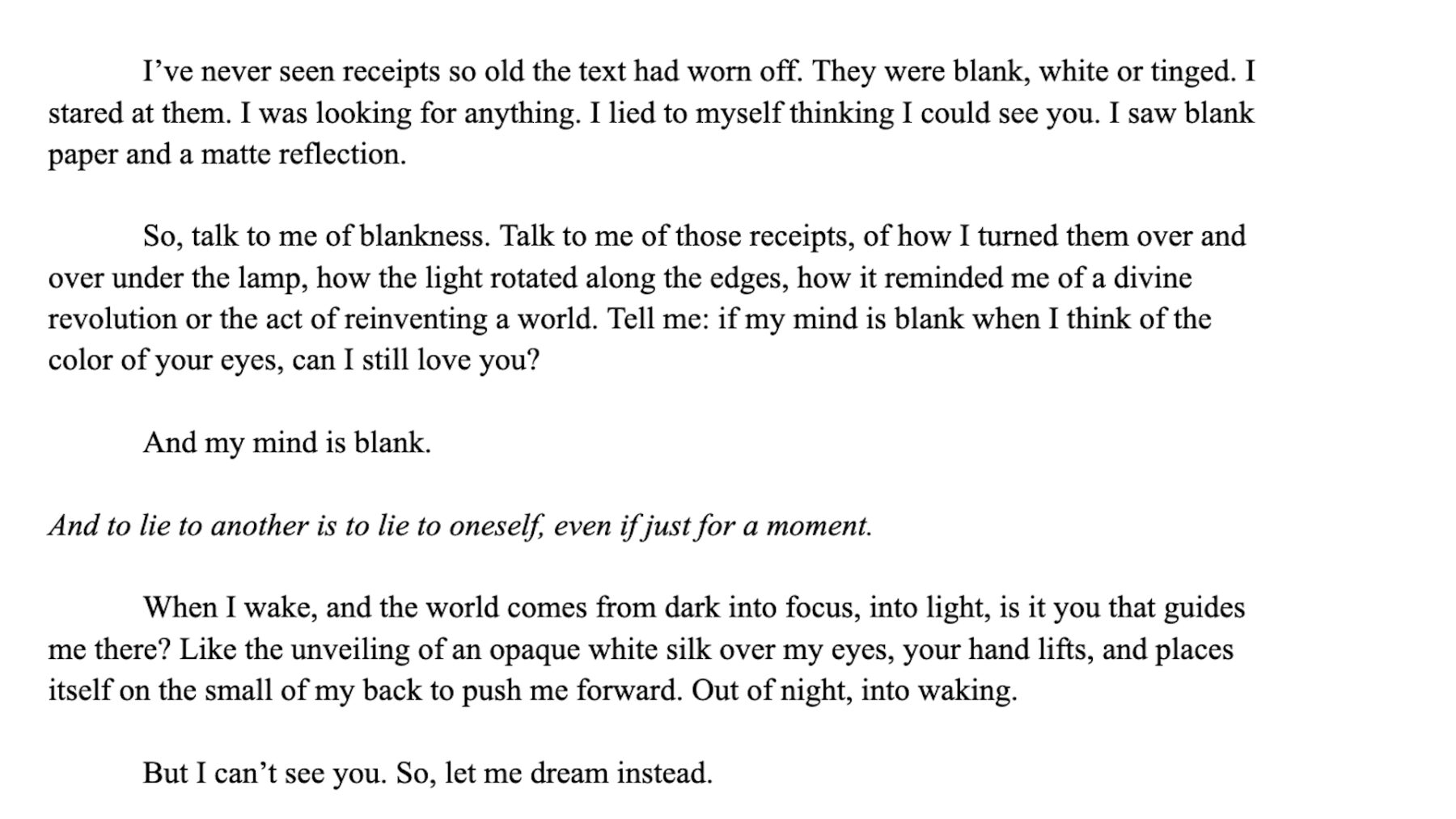

Statement
Lie to Oneself was initially inspired by the prompt, “First Lie,” from Trisha Low. For this prompt, I was asked to meditate on the first lie I’ve ever told about myself or another, and it led me to a more personal history. I often write and talk about my “story” when asked about who I am and where I come from. I am adopted by a mother and father. My mother died of cancer when I was three. People always tell me that they’re sorry at this point, so I made a habit of repeating, “Oh, it’s totally fine. I didn’t really know her. I was too young to remember.” But that’s a lie. I might not remember her specifically, but I still have her to thank for my life, her presence in my life always. Thus, my work attempts to confront the lies and truths of my childhood memory, and show the love that remains.
When starting my form, I was inspired by the epistolary essay that made me start writing seriously in the first place, Ocean Vuong’s “A letter to my mother that she will never read.” I also took visual inspiration from childhood photos of my father, my brothers and me, and musical inspiration from Vladimir Horowitz’ rendition of Schumann’s “Träumerei.”
References
Vuong, Ocean. “A Letter to My Mother That She Will Never Read.” The New Yorker, May 13, 2017:
https://www.newyorker.com/culture/personal-history/a-letter-to-my-mother-that-she-will-never-read.
Horowitz, Vladimir. Träumerei – Schumann (Kinderszenen). CAMIVIDEO, INC. 1986, Accessed April 19, 2024:
https://www.youtube.com/watch?v=3fhKaAX5dOc&ab_channel=medici.tv.
Scott Liu
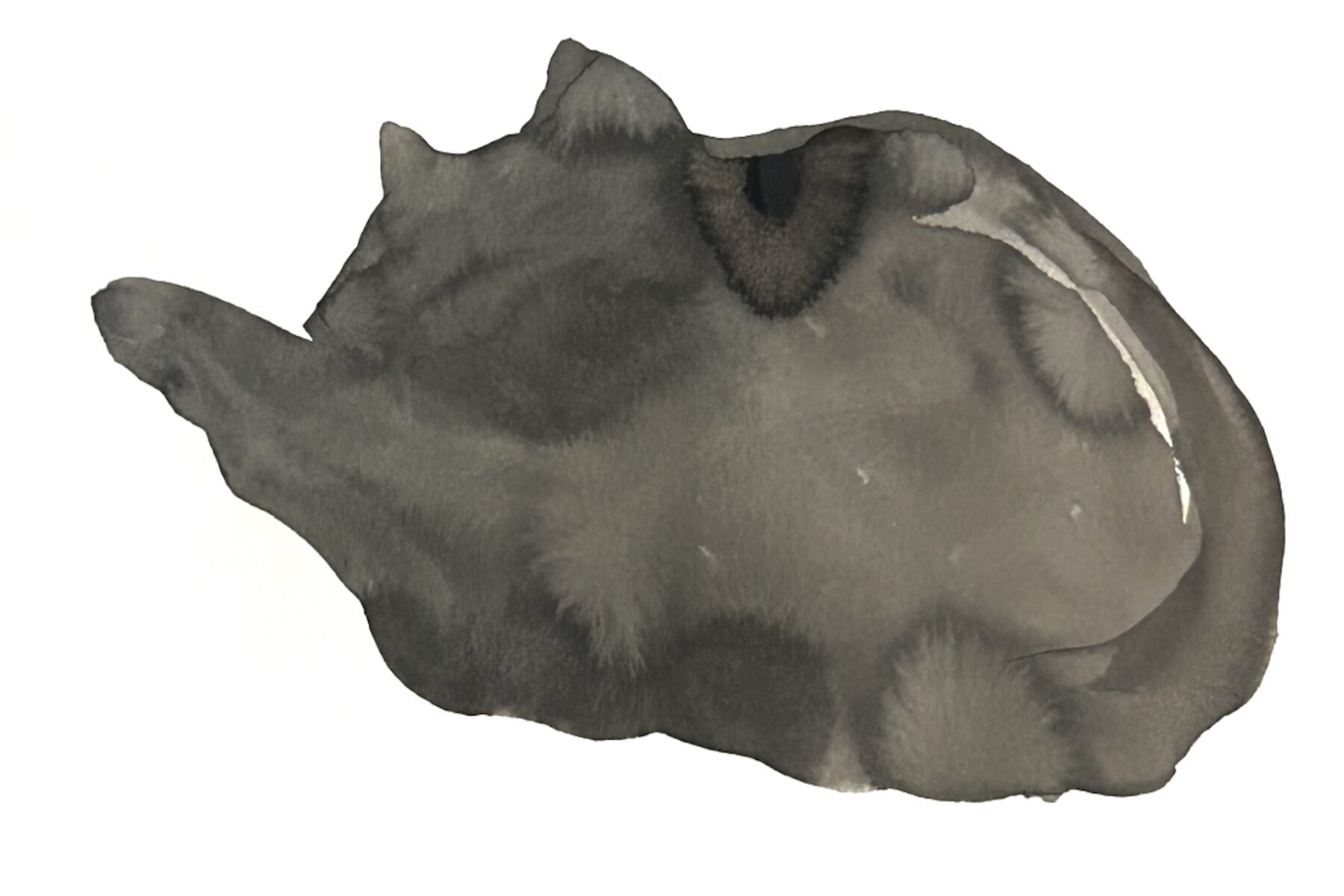
Palter # 3
Sometimes I wonder how different my life would be if the
vendors in front of my kindergarten didn’t sell those
time machines
(shaped like self-cleaning cat litter boxes).
I bought one, although when people ask I’d say that (say, not lie)
that I made it myself.
I used it to go back in time and found out velociraptors are actually
red
(Cadmium Red Medium, Rouge de Cadmium Moyen, Cadmiumrood Middel, Cadmiumrot Mittel, kadm czerwony średni, кадмій чырвоны сярэдні, Кадмий красный средний, 镉红中色调).
Might not be any different at all.
Statement
Palter #3 is a piece about a lie I told when I was a child. There is a constraint, or the structure in which it was written: I tell the lie as if it is true, and ask myself how different my life would be if it were true. As a not-very-imaginative person, and someone who’s bad at deducing logical consequences, my conclusion is: it might not be very different at all. However, there are a few things about lying as a child (at least as a serious child, like me):
- You will find that your friends believe your most ridiculous lie, and then you’ll have to keep it going (for reasons such as cowardice), or else you’d feel bad.2.
- You get more and more defensive.
- You have to come up with more details. For example, when you claim to have seen velociraptors, you give it a color — a very specific color — then you stand your ground and come up with even more specific details. Then you back it up with some objective facts, although these facts are not remotely relevant, as you’d know if you were an adult and not a conspiracy theory advocate.
As I retell the lie (actually, fact, because I never lie) today, I can confidently tell you that velociraptors are red. The red is a very specific one named Cadmium Red Medium. I saw the name of this specific red on the packaging of oil paint pigment from the brand Rembrandt. It was written in English, French, Dutch, and German. In order to show you I really know this red and have authority, I added Polish, Belarusian, Russian, and Chinese. So it would line up geographically all the way to China, where I, as a five-year-old, can prove to you — with as much authority as I have today — velociraptors are red.
References
Read more about (how to pretend to not be) lying:
https://www.urmc.rochester.edu/encyclopedia/content?contenttypeid=1&contentid=528
Read more about (how to) lie:
https://hbr.org/2019/07/what-to-do-when-youre-caught-in-a-lie-even-an-unintentional-one
Read more about two greatest artist ever lived, whom I genuinely love and wholeheartedly admire (remember I do not ever lie):
https://heni.com/primary/release/the-civilisation-paintings
https://whitney.org/exhibitions/jeff-koons
A map that proof to you how you can go from west to east, in the order of Britain, France, Belgium, Netherland, Germany, Poland, Belarus, Russia, eventually China:
https://guides.lib.ku.edu/eurs/maps
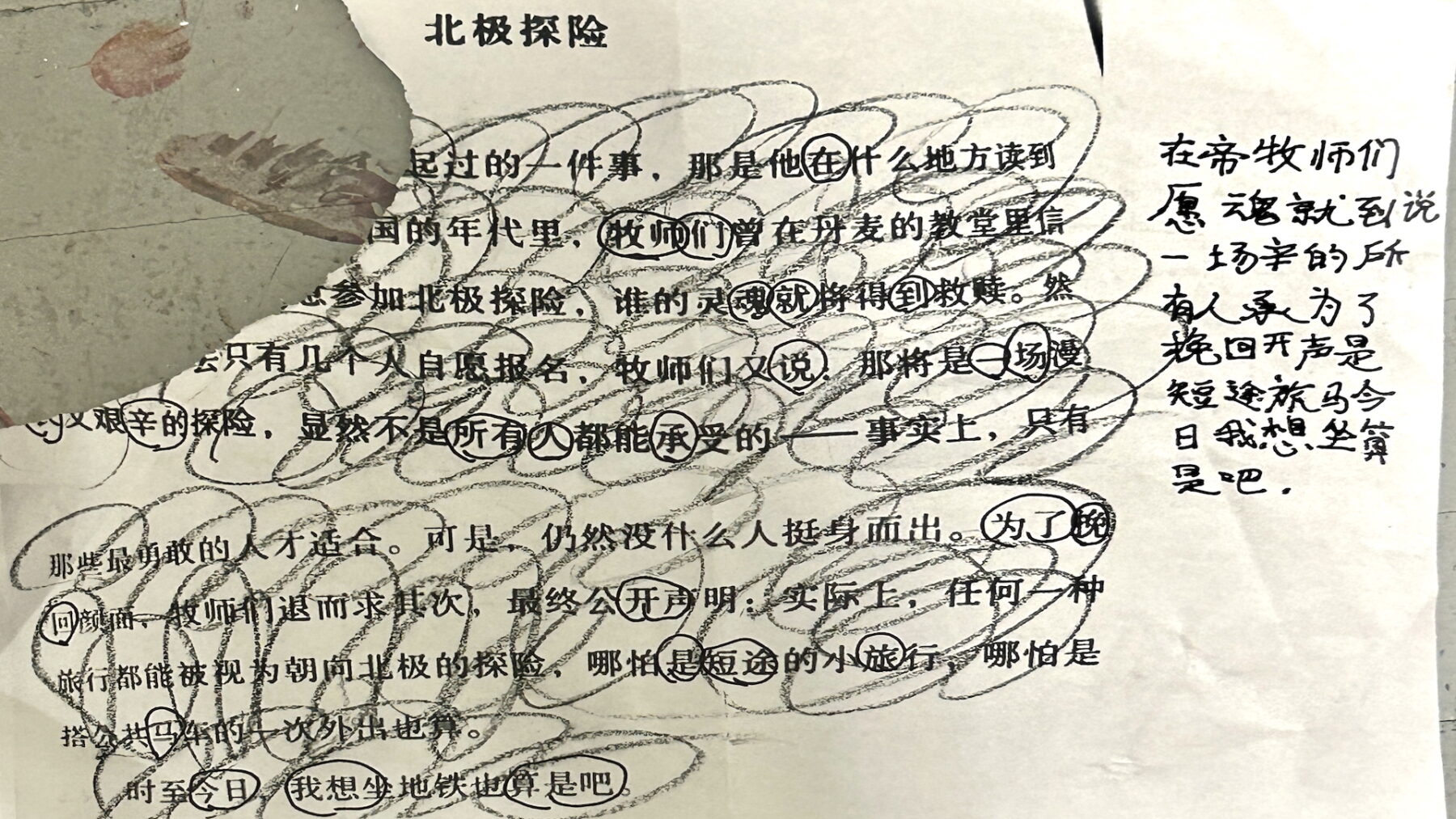
The Journey to North Pole by Subway
In flower’s pedicel, ruling a herd
Of two thousand and five hundred.
May the ghostly cloud arrive
To persuade.
An occasion of hardship endured,
By someone, for a conclusion.
Pull back, and speak in a voice of approval.
Today, now, a short journey through Riding Horse.
The Sun (fuck), I want to sit and prepare—no?
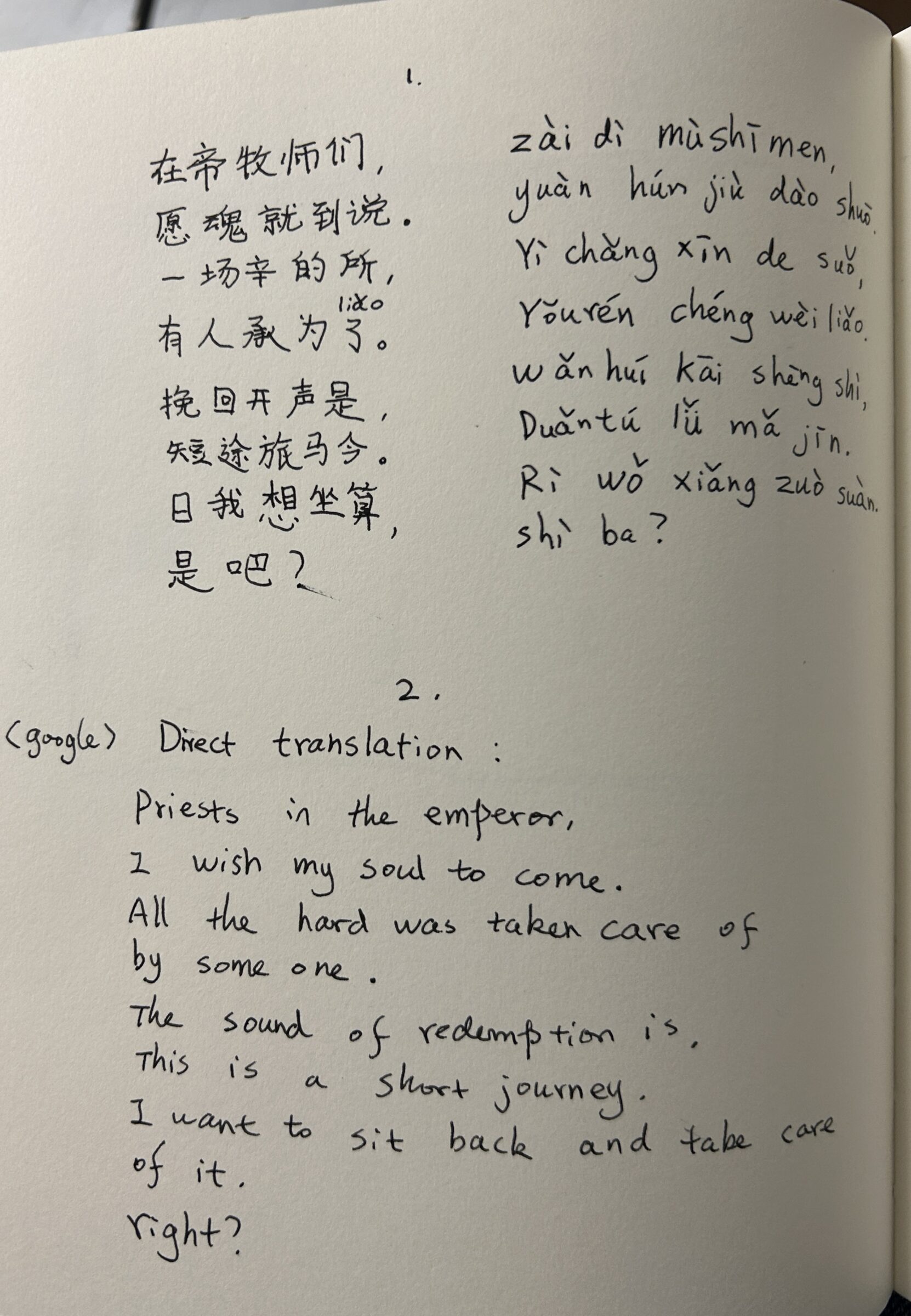
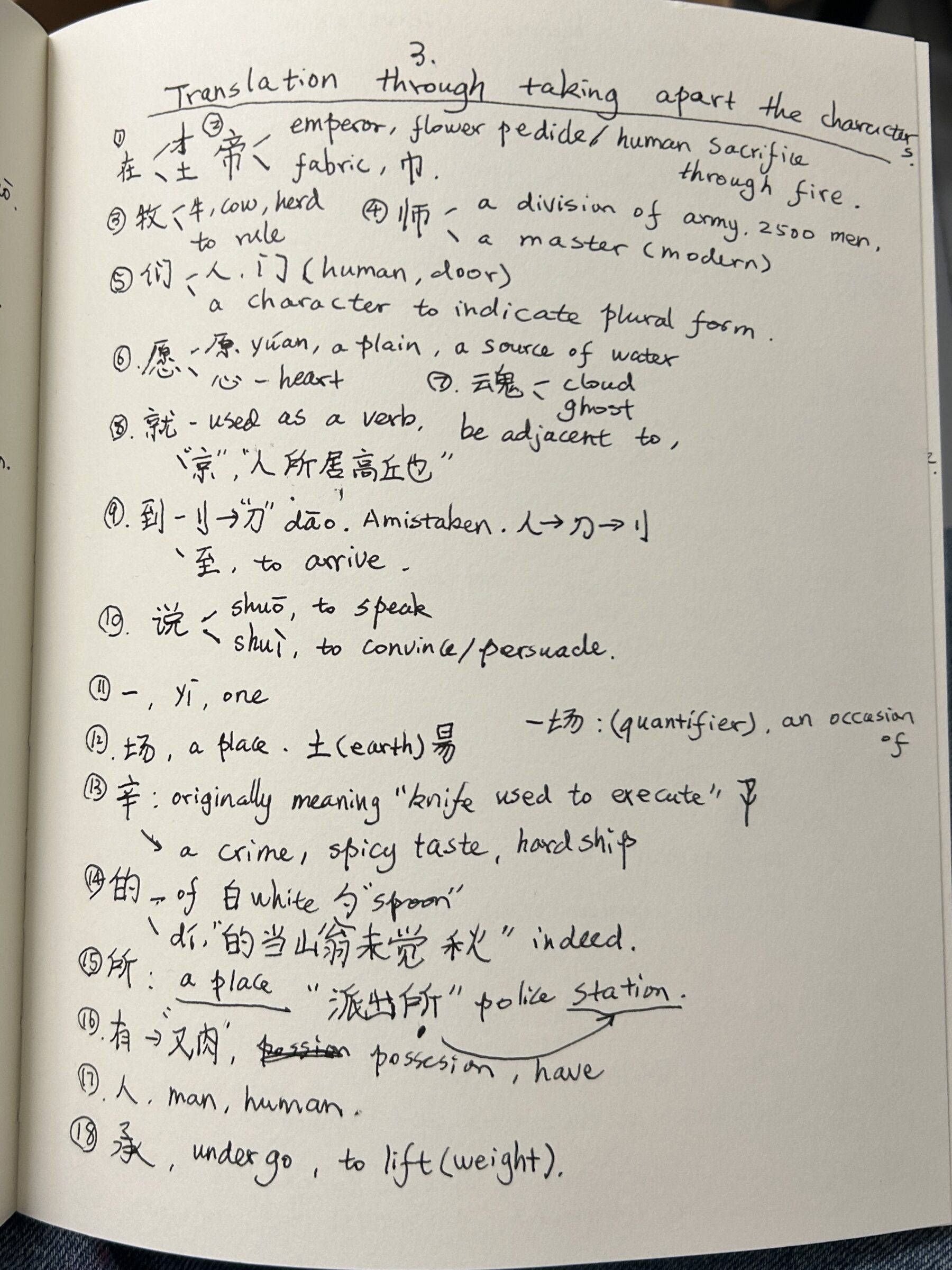
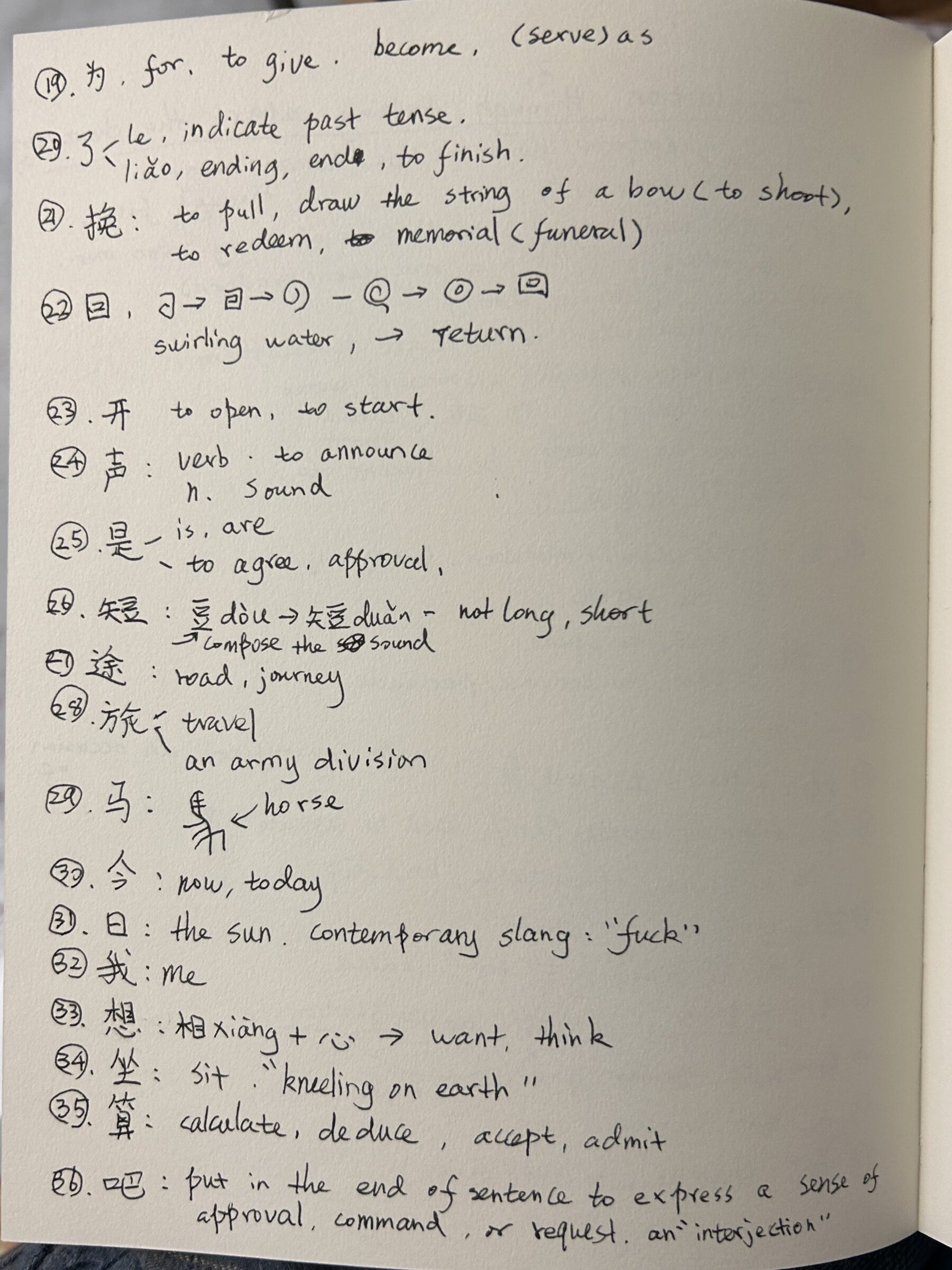
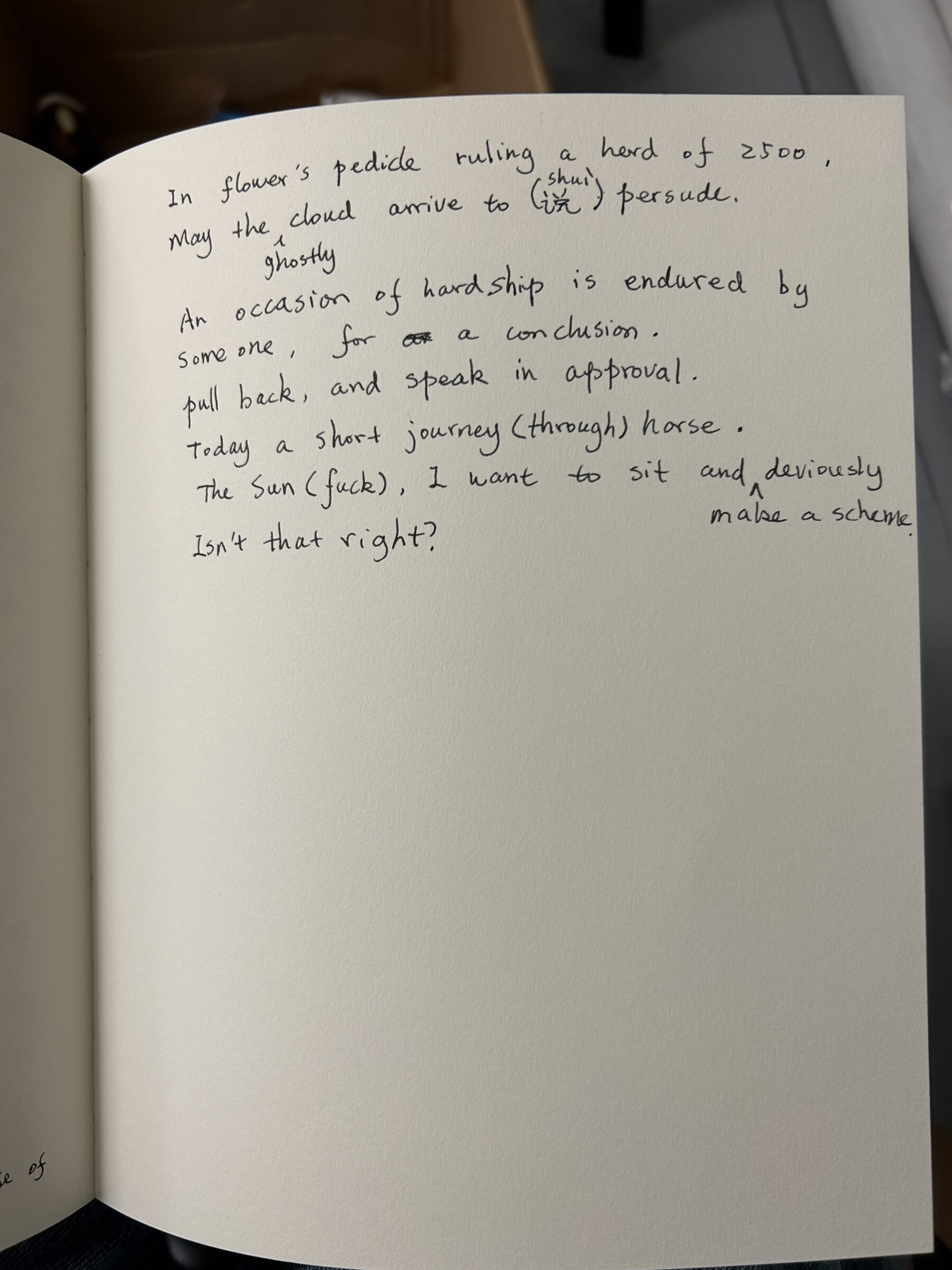
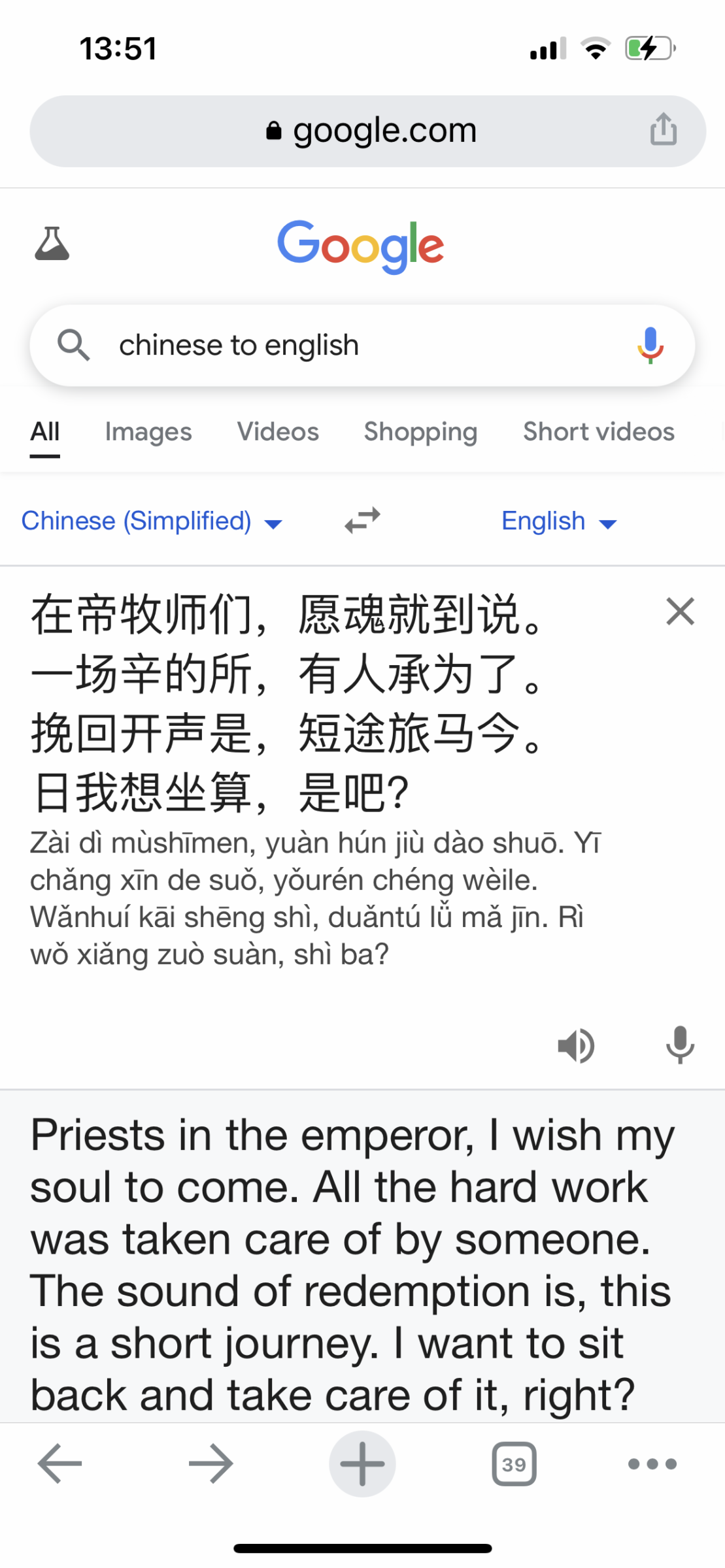
Statement
The Journey to the North Pole by Subway is a piece about transcription. The original text is from the chapter “North Pole Expeditions” in the novel Flights (Bieguni) by Olga Tokarczuk—a novel that lives rent-free in my mind. The chapter is told from the perspective of “I,” a presence that I, as a reader, assumed was a version of Tokarczuk herself. In the chapter, she claims to have read the story she retells from Borges (which, according to my internet search, shows no evidence of existing). In this story, Borges recalls a tale in which Danish ministers, unable to inspire volunteers for dangerous North Pole expeditions—even after promising salvation—gradually lower the standard. Eventually, they claim that even a simple carriage ride counts, in order to preserve their authority and make the challenge seem more attainable when people wouldn’t rise to meet it.
I read this chapter in Mandarin, translated from Polish. I printed a copy of the page and drew random circles on its surface. Then, I selected the characters that weren’t touched by the circles. From these random characters, I placed five into one row, forming a Five-Character Poem—a poetic form that became popular after the Han Dynasty.
The reason I chose this approach is partly because of the potentially hearsay nature of the story itself: a microhistorical anecdote, vaguely remembered by Borges, and then vaguely remembered by “I”—much like drawing disconnected fragments from a paragraph. The other reason is that I have confidence in creating something out of the random. While the selected characters do not compose a readable sentence together, I attempt to translate them by breaking apart each character’s components, or by tracing each modern form back to its original hieroglyphic root. Through this, I aim to recreate an imagery—one that cannot be conveyed through conventional translation, which focuses on the effect of what is said (conventional translation), rather than what is being said.
Notes: Although there’s an ongoing scholarly debate (largely within Western World) on whether Chinese language is an ideographic language or phonetic, its origin is commonly recognized in China as a form of hieroglyphs, developed further and involving phonetic elements. One character could hold the capacity to hold imagery and emotion, to a person relevant in that culture, a connection would be built between the imagery and emotion of a certain character to that certain sound (for example, 哭kū, 枯kū, 苦kǔ, meaning cry, wither, and bitterness. Note how in both ”枯“ and “苦”, the character “古” (gǔ) is involved as a phonetic element.) This quality stands out in ancient Chinese poetry, and when translated to english, is most obviously obscured.
References
Flights by Olga Tokarczuk, the passage I referenced is on page 86 in this PDF file:
https://readandlaugh.wordpress.com/wp-content/uploads/2020/07/flights_-_olga_tokarczuk.pdf
Things about Chinese language:
http://www.jstor.org/stable/43285906
Interview with Yoko Tawada, whose works relate to transcription and translation:
http://www.jstor.org/stable/20688244
Shienka Martinez
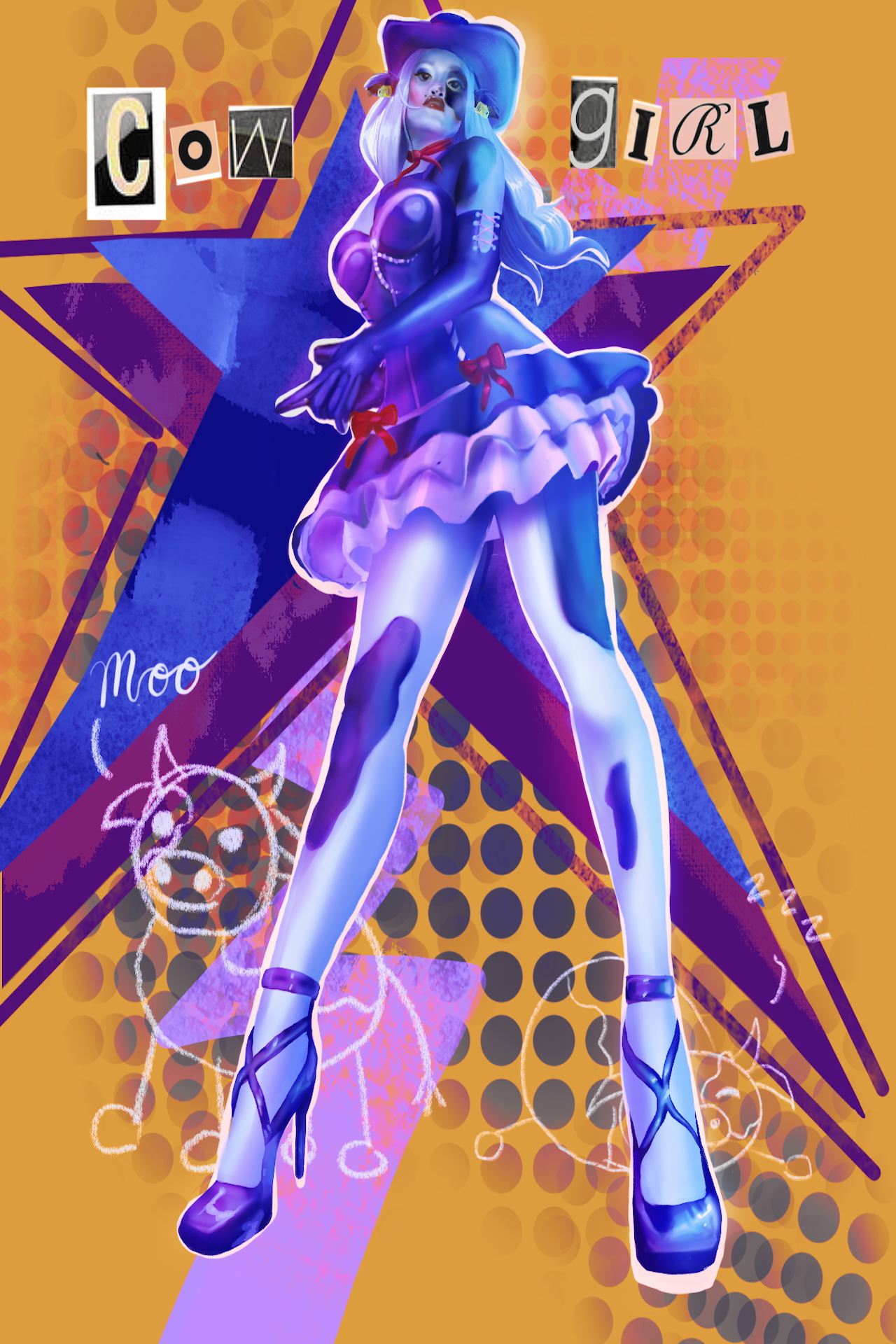

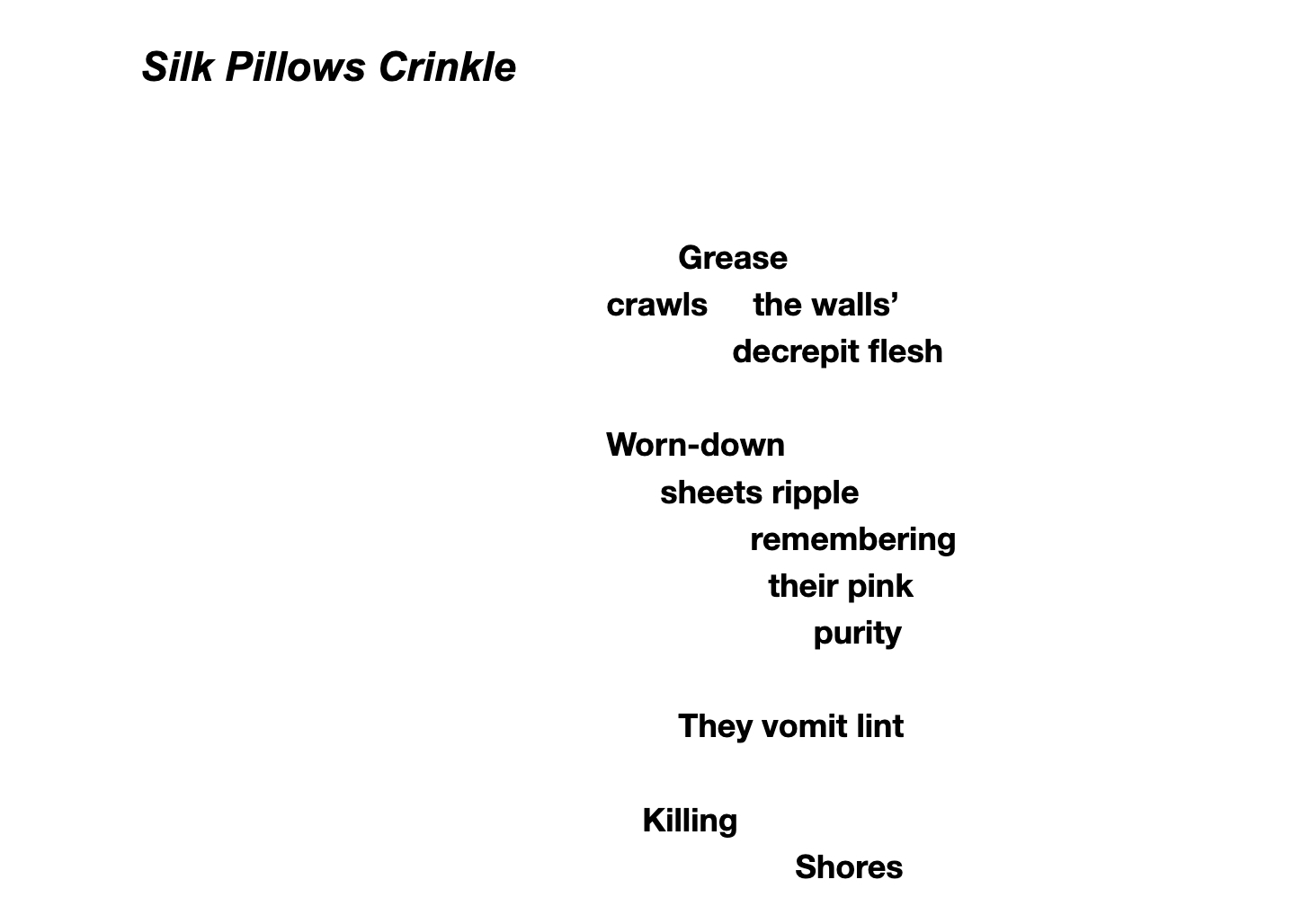
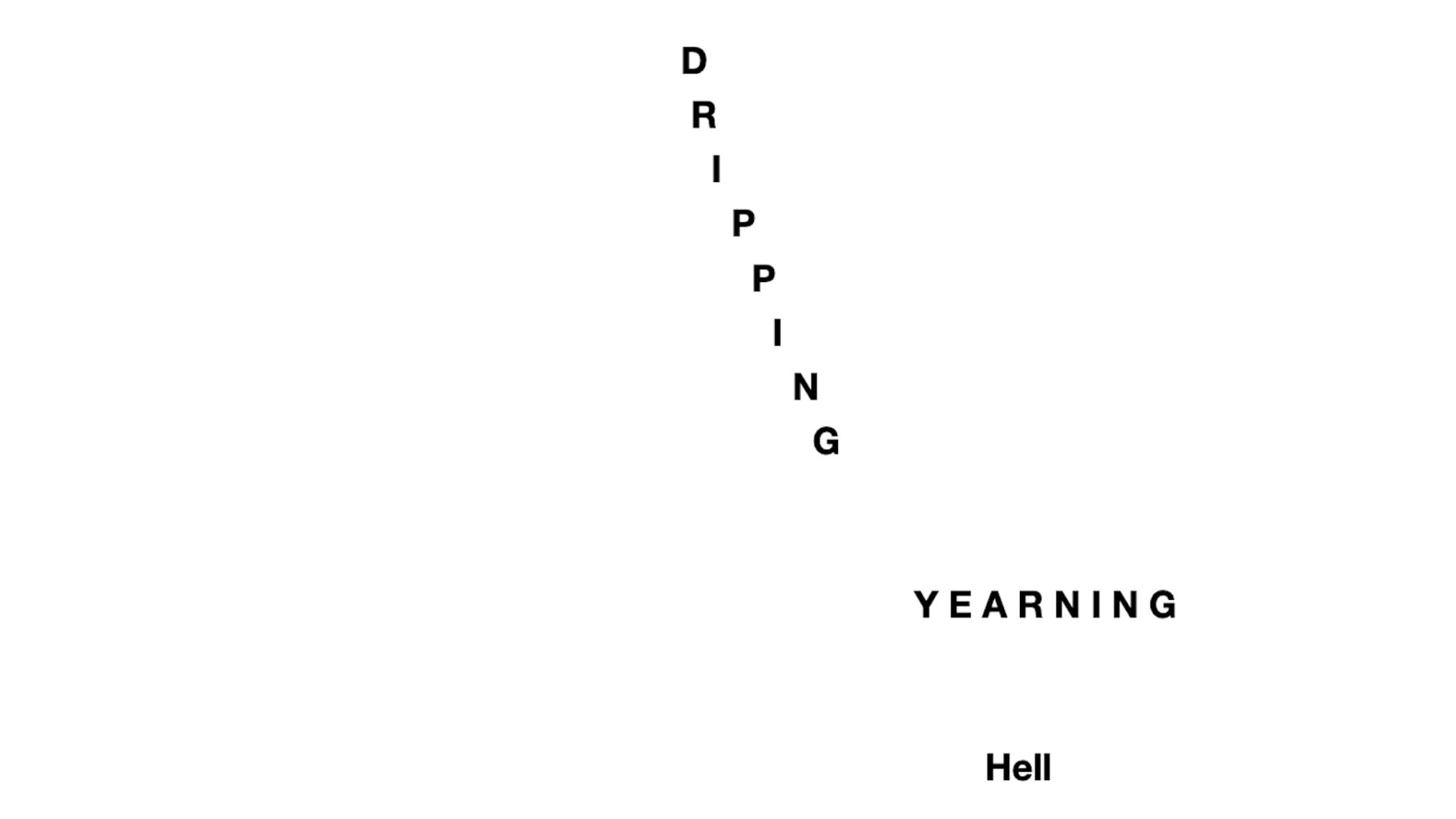
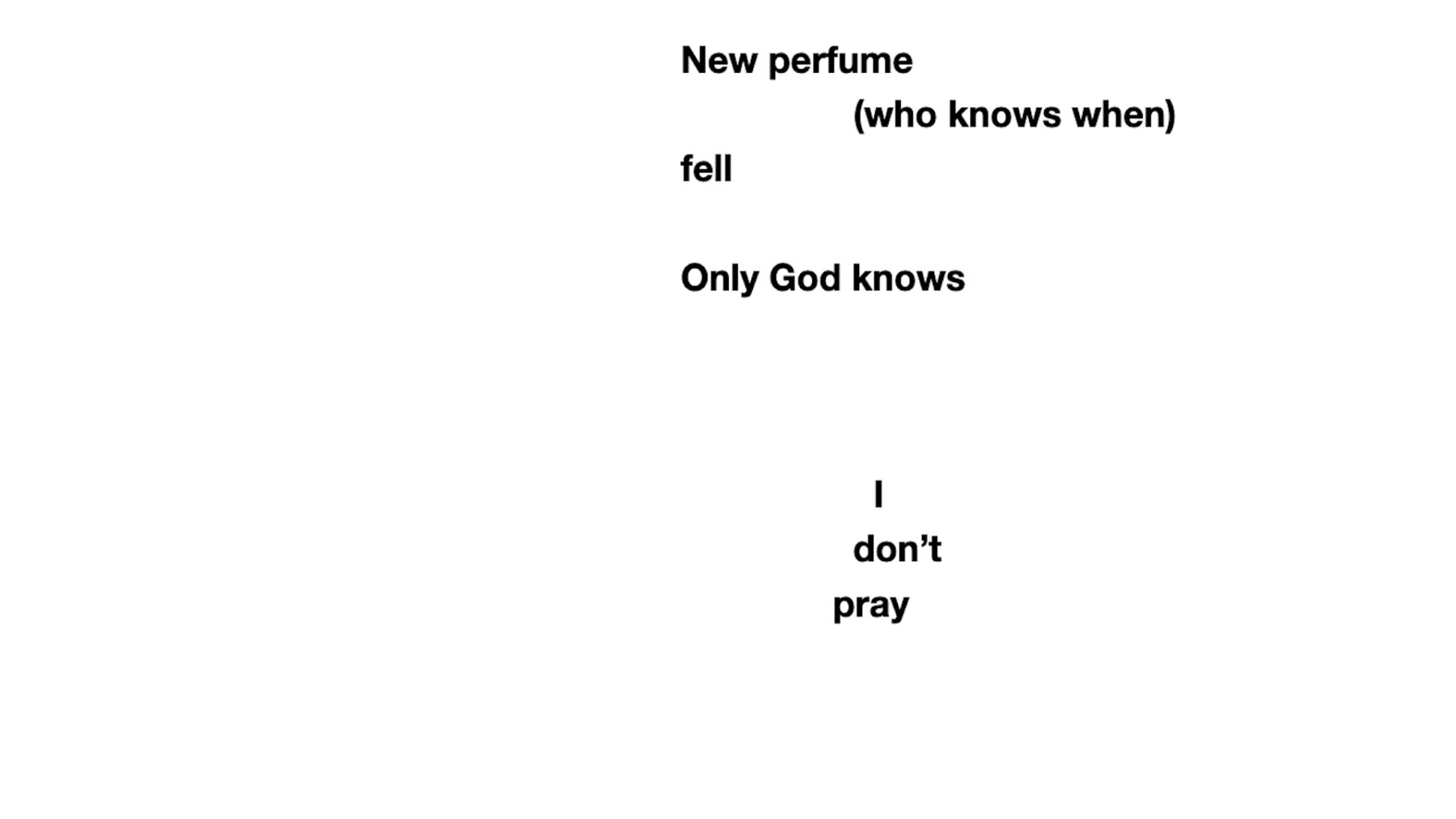
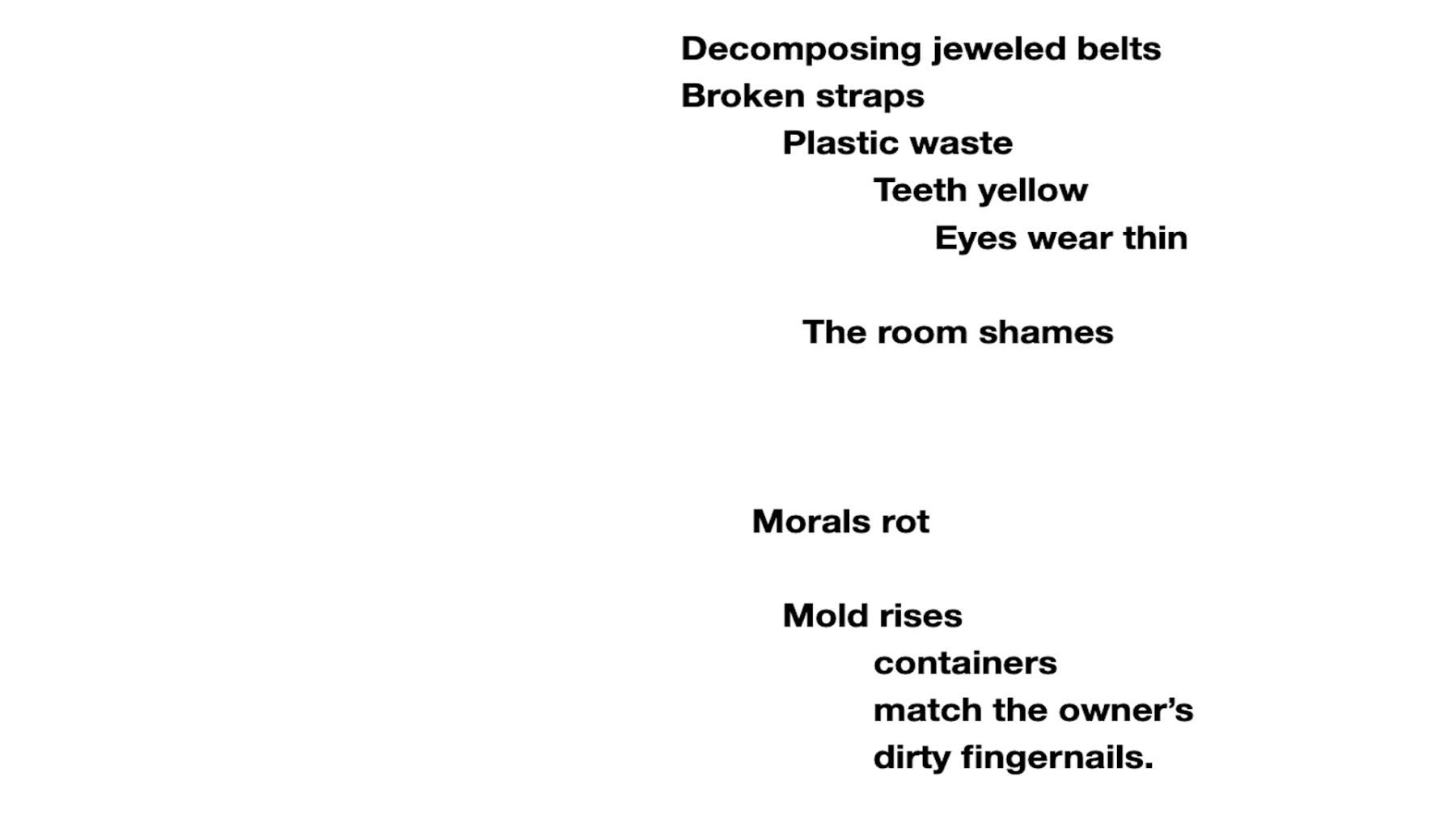
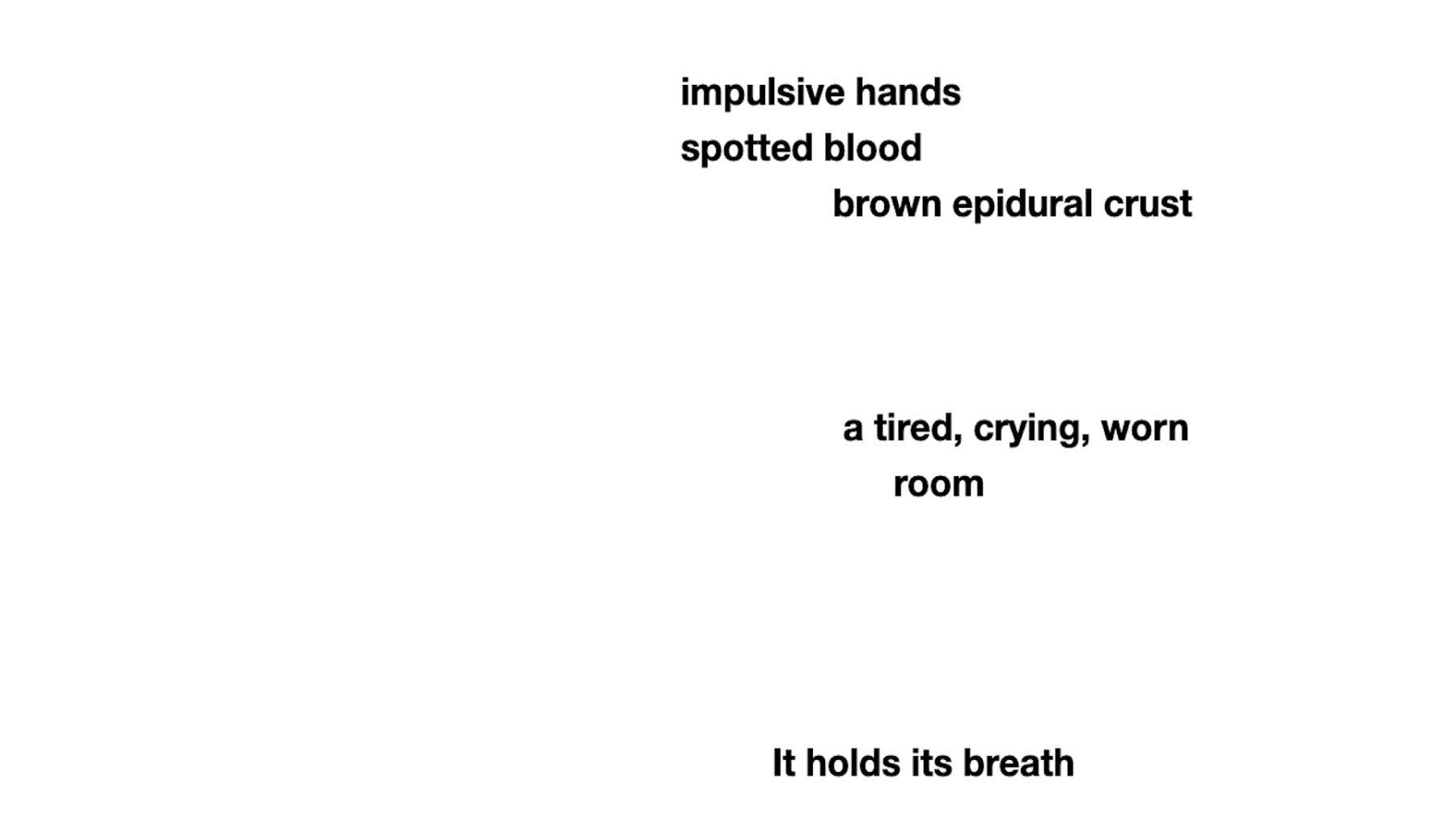
Statement
In Silk Pillows Crinkle, I wasn’t trying to tell a linear story, I was trying to capture a sensation. The poem is a formal and emotional experiment, rooted in my experience with panic attacks and shaped by the physical disorientation that accompanies them. To reflect that sense of fragmentation, I wrote the piece without prepositions, removing the spatial glue that typically holds sentences together. The result is a kind of linguistic freefall, one that mirrors the scattered, hyper-sensory, and surreal state I enter during episodes of anxiety.
This constraint was inspired by Georges Perec’s La Disparition, a novel written entirely without the letter “e.” While I haven’t read it in full, the concept, using formal restriction to evoke absence, resonated with me. Perec’s approach transformed omission into a tool of emotional depth, using the lack of the letter e to emulate a feeling of loss after the events of the holocaust, and I saw a parallel in the way my own panic silences or distorts my ability to articulate what’s happening. By stripping the poem of prepositions, I forced it into an unfamiliar rhythm, where the body and the room blur, and the reader is left to assemble meaning from sensation.
References
Sidnam, W. (2023). The novel without the letter E. Medium:
https://medium.com/language-lab/the-novel-without-the-letter-e-d60410bfbf50
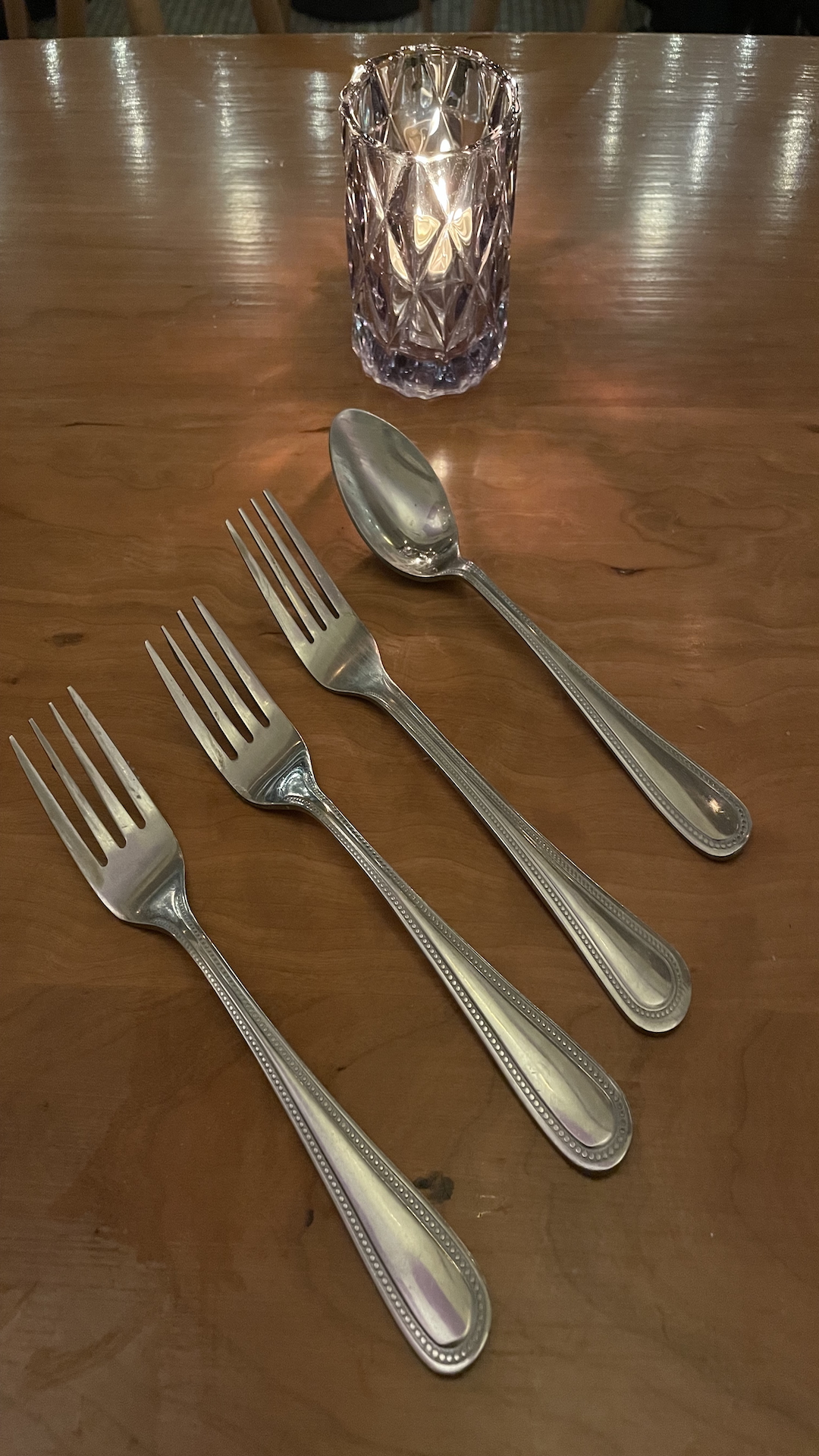

What is the Protocol?
I’m an O in marmalade syrup.
You saw Elon Musk? I sent you the video.
Fake. I saw it first.
No — I saw her.
Everything’s burned.
What do you mean, no?
Men. Two. Women. Two men.
Penis, virine —
For you? For me?
What’s the protocol?
Minor plasty? Yes.
Why are you obsessed?
It’s good. Is it?
Tastes good — must be a good source.
Emily? A purse?
They deserve it.
How’d the police not get them?
They know the policy.
You’re right — it’s good. It’s pretty good.
What’s the rating?
Not bad.
How is no one on this movie?
Metacritic’s harsh. Someone gave it a 100.
She doesn’t even speak Spanish.
Female empowerment. Nosebleeds. Pigs.
How’s this progressive?
The movie bullies cartel victims.
I don’t wanna read it all.
Do you like it?
But don’t be biased.
I’m not —
Okay but what if she’s just… pretty?
She’s the main one.
She’s very bad. And blue.
Wait — is she the green girl from Guardians?
I knew it.
They beat me to it.
Statement
What is the protocol? is a piece that employs transcription not only as a means of capturing fleeting cultural relevance, particularly surrounding Emily Perez and the accompanying discourse—but also as a legitimate contributor to the work itself. Drawing heavily from Kenneth Goldsmith’s Traffic, in which he transcribes an entire day’s worth of radio traffic reports without editing for clarity or style, I approach transcription as both method and subject.
For my piece, I recorded a casual conversation between my boyfriend and me, allowing my iPhone’s transcription software to automatically convert our speech into text. Rather than correcting the technological errors, I embraced them, allowing the distorted, fragmented output to shape the final work. Much like Goldsmith’s commitment to preserving the imperfections and monotony of the original broadcast, I prioritize process over polish, underscoring the inevitable loss, mutation, and chaos that occur when spoken language passes through digital mediation.
Although the misheard words and jumbled reconstruction were unintentional, they ultimately reinforced one of my central critiques of the film: its oversimplification of both Latino and trans identities. Just as Apple’s transcription software failed to recognize certain words, lacking the cultural and contextual awareness to fill in the gaps, so too does Perez’s director, who, due to a lack of meaningful research into Mexican culture, portrays cartel violence with troubling levity. For example, Netflix describes the cartel leader’s transition as that of a “remarkable woman,” a summary that ignores her history of violence and the complexities of her transformation. Similarly, a line in which her daughter tells her she “smells like a man” reflects a transphobic ideology that denies the legitimacy of trans womanhood. Just as my phone misinterpreted “vagina” as “virinie,” the film’s handling of identity lacks the nuance needed to portray these experiences authentically and respectfully.
In both cases, the distortion is not just technological or artistic, it’s symptomatic of a broader cultural failure to listen deeply, interpret responsibly, and represent truthfully.
References
GLAAD. 2024. “‘Emilia Pérez’ Is Not Good Trans Representation.” GLAAD | GLAAD
Rewrites the Script for LGBTQ Acceptance. GLAAD. November 15, 2024:
https://glaad.org/emilia-perez-is-not-good-trans-representation
Goldsmith, Kenneth. “Why Conceptual Writing? Why Now?” Essay, xvii–xxii. Evanston, Illinois: Northwestern University Press, 2010.
Staff, Tudum. “Emilia Pérez Is a Musical Story of Rebirth.” Netflix, March 3, 2025:
https://www.netflix.com/tudum/articles/emilia-perez-plot-cast-release-date.
Gari Mor
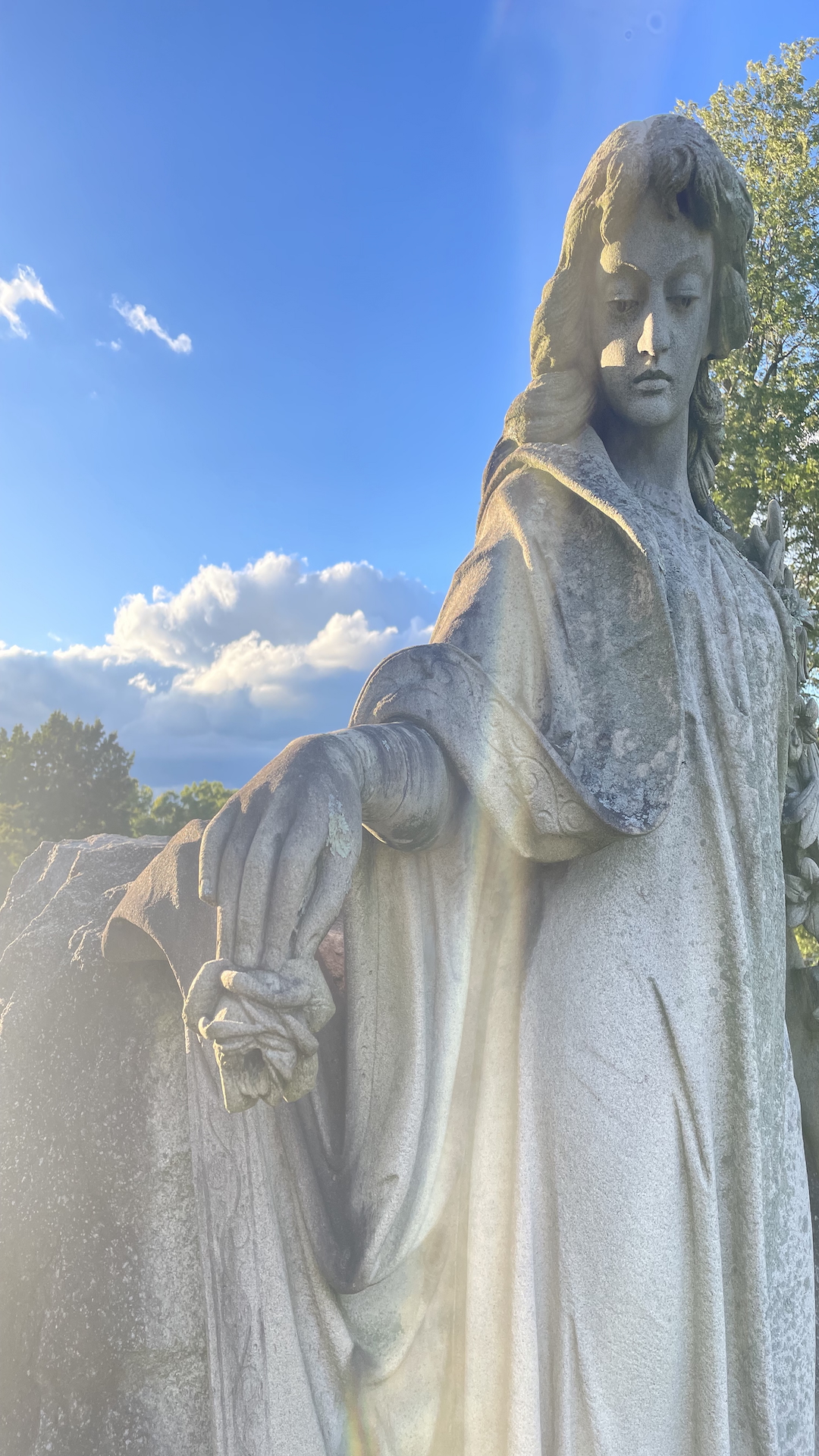
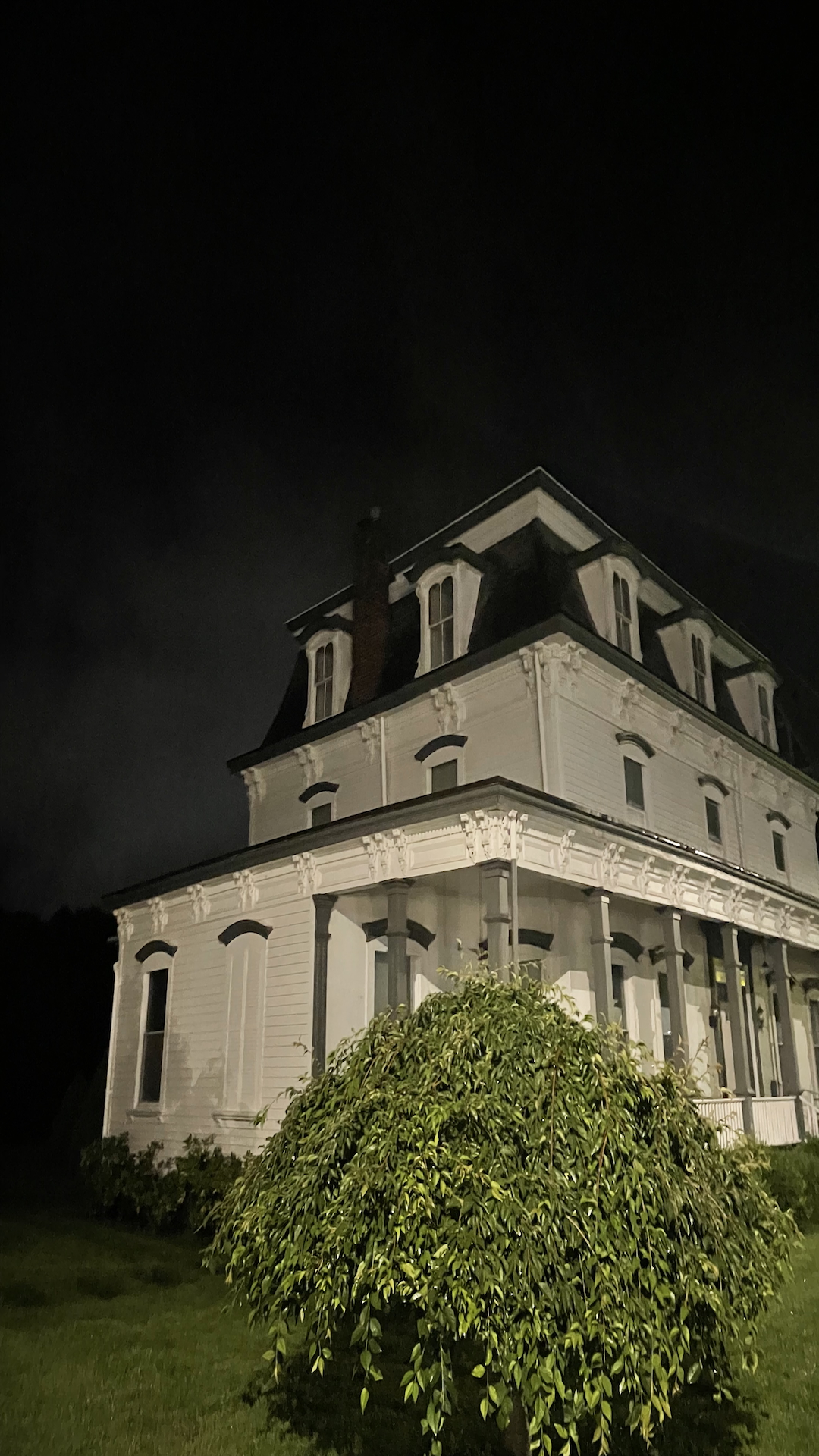
The Mark of Cain
(After Angela Carter’s Burning Your Boats, 1995)
rouged lips left
the mark of Cain
arms it is
gate it was an
iron gait
nobody came to meet me
although he hoped this garment, elbows, hands and knees
this natural state
therefore without flesh’s
own weird authority
as itself outgrown
with a series of affectionate legs—long lean and muscular
but they cannot do so
pace is not our pace
red lips
thick and fresh
would-be saviour
with needles
in a visible gun
since it was impulse
gun lay
propped
gun she forced me
forwards
rifle and knocked
firmly
some luxurious interior decorator/the breakers of the horse that stumbled on the causeway/no more yet no surprise and once irritated/disappointment she provoked nothing/her head surrounded by a spiked halo
Statement
The Mark of Cain is lifted from Angela Carter’s Burning your Boats: The Collected Short Stories (1995). I felt it would naturally work against her writing style to impose a constraint as her writing abounds and overflows with excess of all sorts, excess of descriptors, excess of sex, excess of symbolic actions to name a few. Inspired by the writing group the Oulipo’s use of constraints, I limited myself to only using the next four words following the word Her, but I edited them once they existed in my own story. I mirrored Angela Carter’s work, perhaps subconsciously, by reconfiguring her words into something that some readers might hopefully recognize: a distorted and cultish depiction of lesbian sex. Depictions of sick power dynamics and odd and playful imagery run rampant in the works I consume and spit out.
References
Carter, Angela. Burning Your Boats: The Collected Short Stories. (New York: Henry Holt and Company, 1995),116-320.
DUNCKER, PATRICIA. “Queer Gothic: Angela Carter and the Lost Narratives of Sexual Subversion.” Critical Survey 8, no. 1 (1996): 58–68:
http://www.jstor.org/stable/41555969.
Dunn, Katherine. (1989) 2015. Geek Love. London: Abacus.
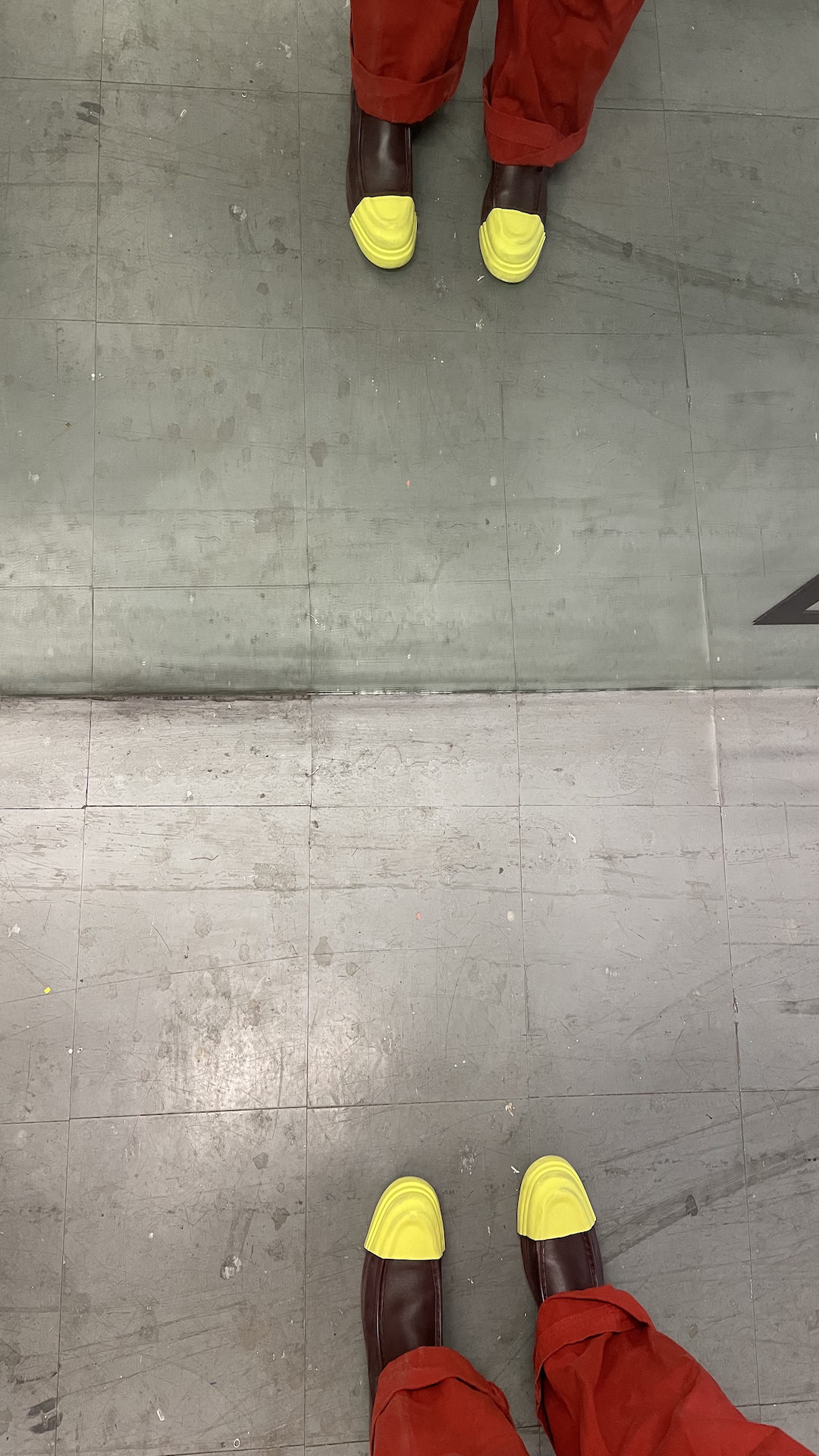

Chocolate Bag
I don’t have the best memory so I’m sure this work will be a lie in itself even if it’s unintentional. My dad’s dad told me if I kept choking down chocolate milk at the rapid and unnerving pace that I was, that it would fill me up and explode and leak out of my ears like a coke bottle that had ingested too many pale pink mentos for its own good.
That had happened to his sister actually. Not Galia or Anat, but a third, sadder secret-er sister. I hadn’t met her. On his third birthday (and he remembered this like the way he remembered folding his wife’s final army parachute) she drank too much and exploded like a latex balloon. They mopped her up and kept her in a shallow china saucer and the sun dried her right up. It left a thin film of chocolate dust. I lay awake that night clutching the top of my head as if I was holding down a cap, and feeling the offending liquid slosh around in my stomach. Exactly like the yellow plastic sacs it came in.
Thank God he warned me when he did. Of course it did scare me but just think of where I would’ve ended up if he hadn’t. I’ve had a couple friends who went down that path and I watched them dissolve and slosh into the floor from the sneakers up. So many good shoes ruined that way, probably smelled of that sour sweet milk tainted with the particular sweat of the parched child that just a few hours ago had stood in that spot on the green carpet. The remodeling looked to be painful, or maybe it was just the confusing indescribable nature of the reupholstering of baby-fat into milk.
Not that I would know, thank god.
Statement
Chocolate Bag was inspired by a prompt given to the class by Trisha Low, a renowned conceptual poet. I had to pick a lie, the first lie I had ever told or had been told about me, and treat it as if it were law. What resulted was the sort of feeling i imagine one would acquire from riding an overly saturated, turbo-powered carousel, perhaps an unfortunate mixture of inspiration from Trisha Low’s confrontational and witty musing, and encouragement from other self- indulgent writers like Karen Russel that opened the door for me to create in such a visually accosting way. The paragraph style of this work hits you visually like a brick wall, and the words like bile in your gut.
References
Weeks, Erin. 2024. “‘Regular Life Is so Intensely Weird:’ a Craft Conversation with Karen Russell – Chicago Review of Books.” Chicago Review of Books. May 16, 2024:
https://chireviewofbooks.com/2024/05/16/regular-life-is-so-intensely-weird-an-interview-with-karen-russell
Low, Trisha. 2011. “SO to SPEAK.” SO to SPEAK. May 4, 2011:
https://www.sotospeakjournal.org/blog/shevaun-brannigan-on-writing-from-trauma-rbj62-677le-ec348-s4zn9-bt7c8-99k65-szff9-xthxb-bepdl-2knje-4mbzp-dry9m
Low, Trisha. 2019. Socialist Realism. Minneapolis ; Brookyln: Coffee House Press.
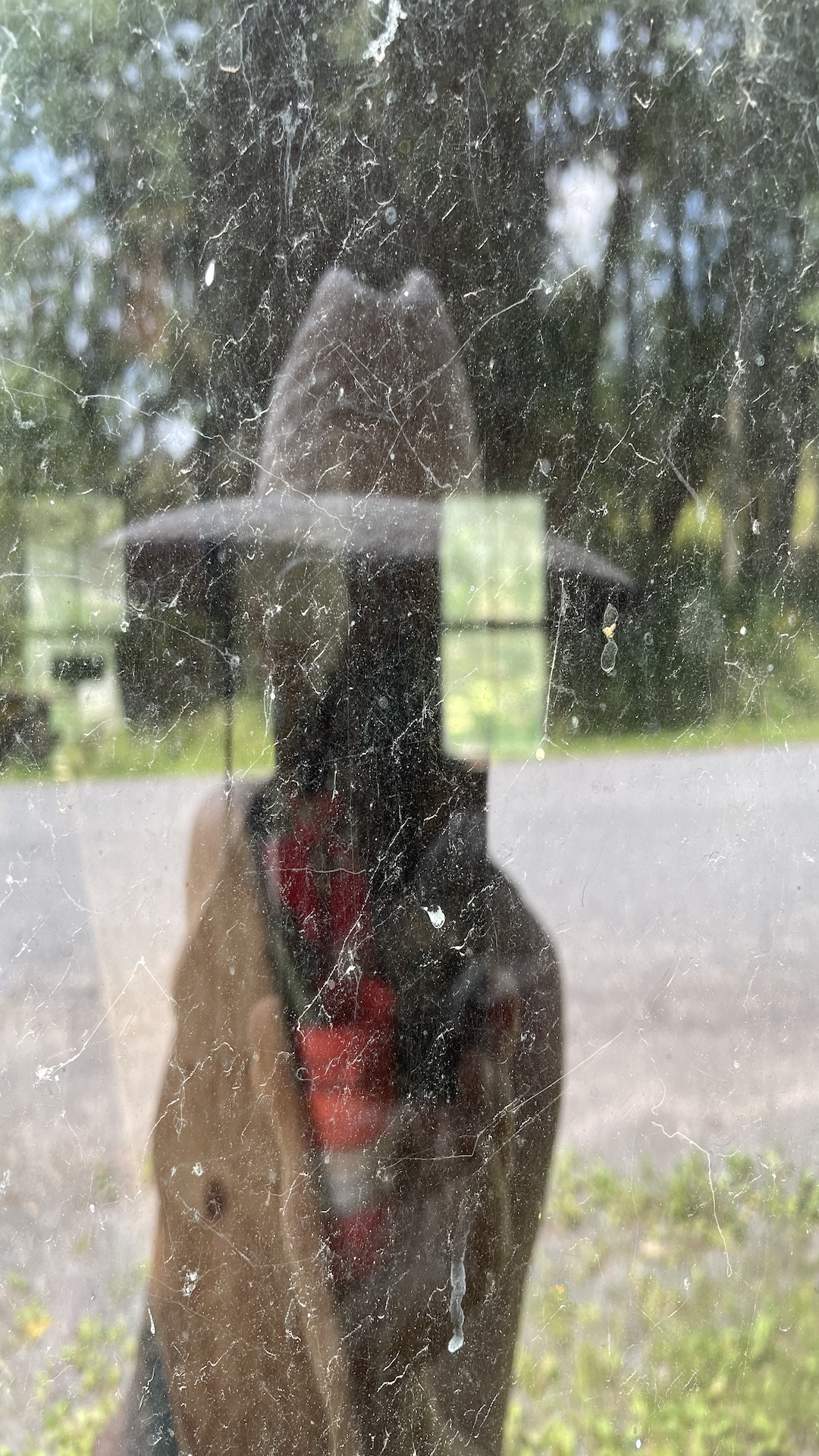

CREDITS
Image 1: Cash M Ragona
Image 2: Lillian van Veen
Images 3 & 4 side-by-side: Cash M Ragona
Image 5: KARNY
Image 6: KARNY
Image 7 doubled: KARNY
Image 8 doubled: Jolie Booth
Image 9: Jolie Booth
Image 10: Rhys Collins
Image 11: Rhys Collins
Image 12: Scott Liu
Image 13: Scott Liu
Images 14-19 Process Images x 5 side-by-side: Scott Liu
Image 20 doubled: Shienka
Image 21 doubled: Cash M Ragona
Images 22 and 23 side-by-side: Cash M Ragona
Image 24 doubled: Cash M Ragona
Image 25 doubled: Cash M Ragona
Special Thanks
Ece Ulus (Teaching Assistant for Art Writer & Online Exhibition Editor), Phillip Crook (for Design and Publication Support), and Charlie White (for Seminar and Publication Support)




